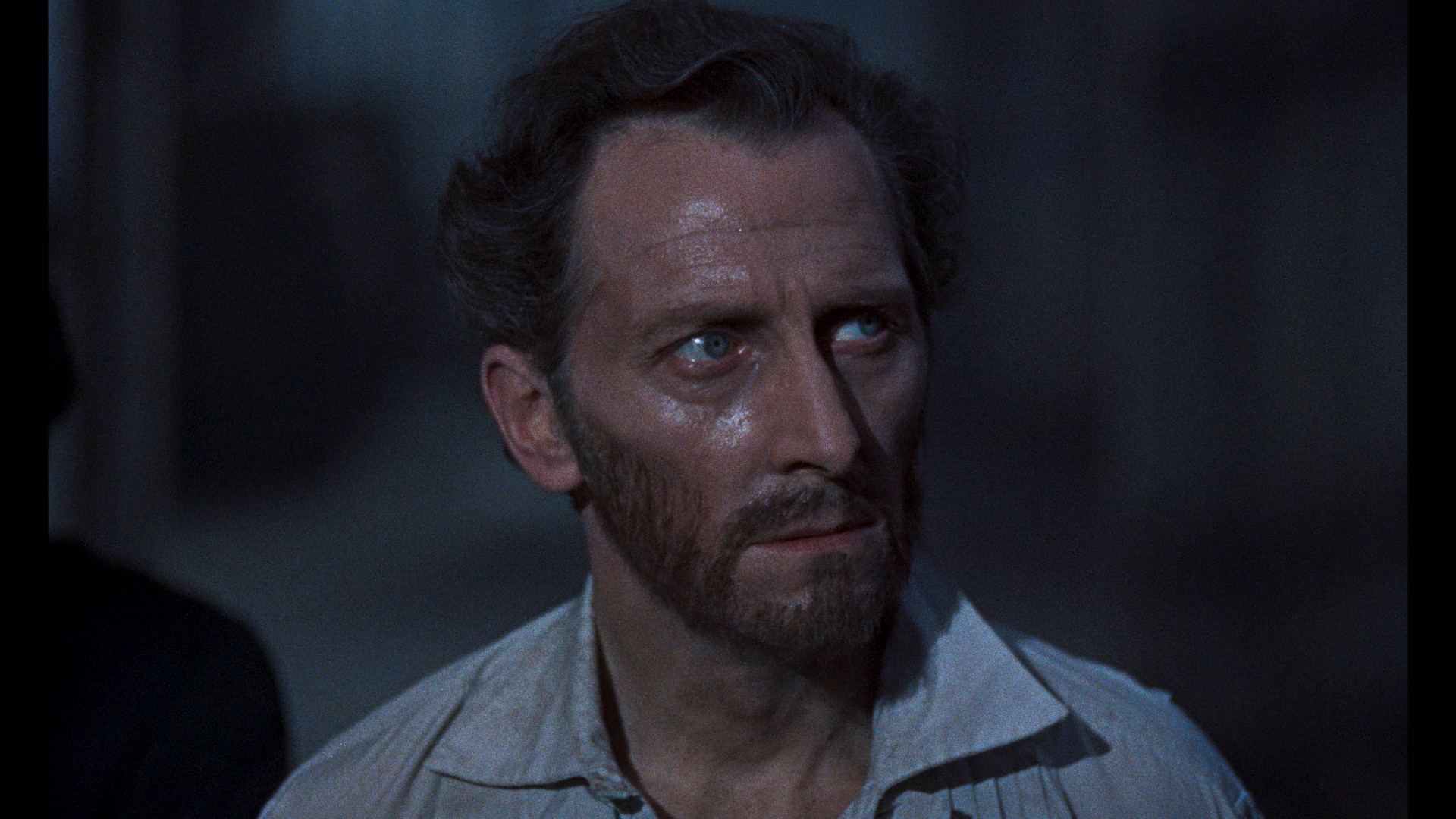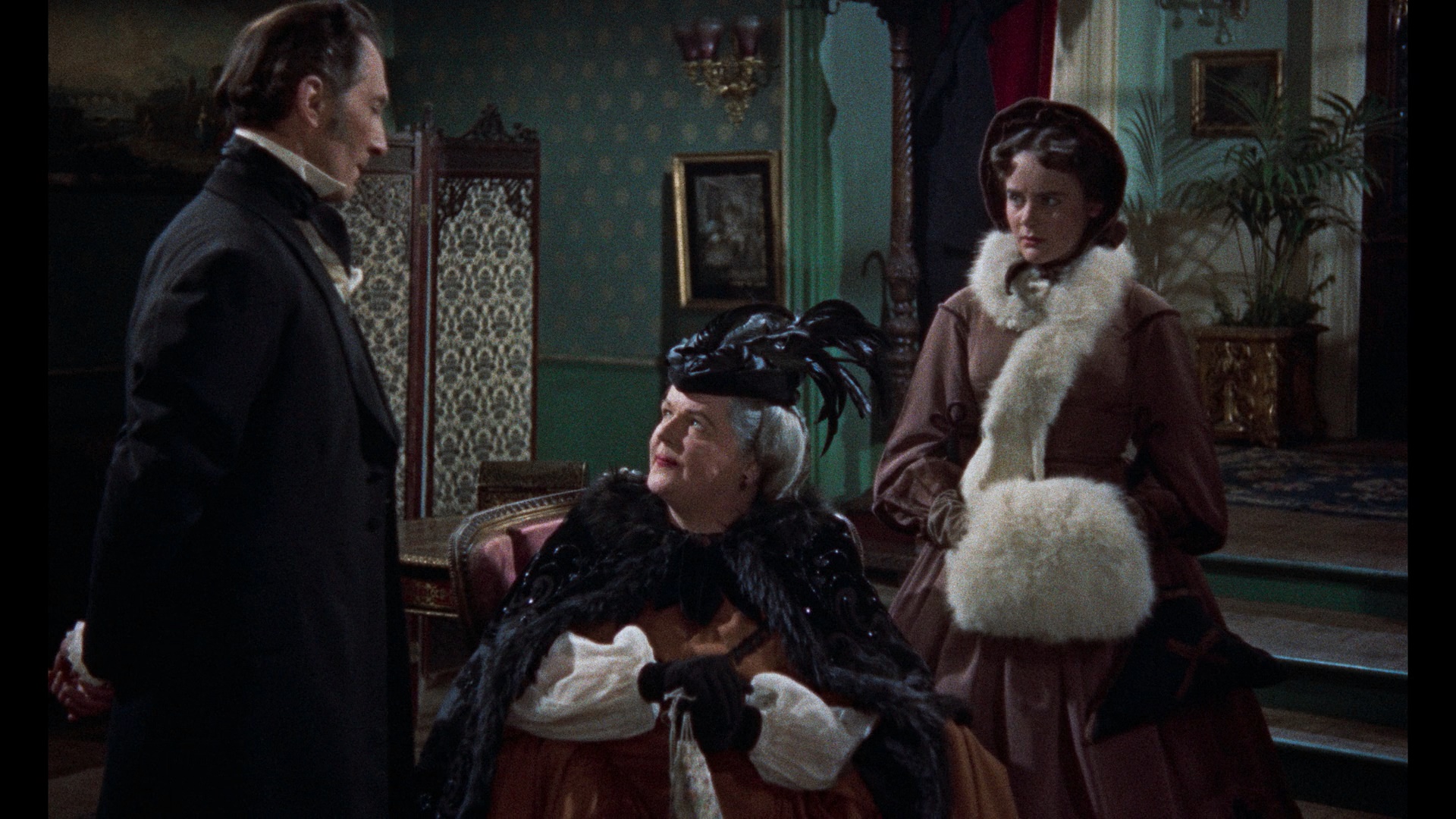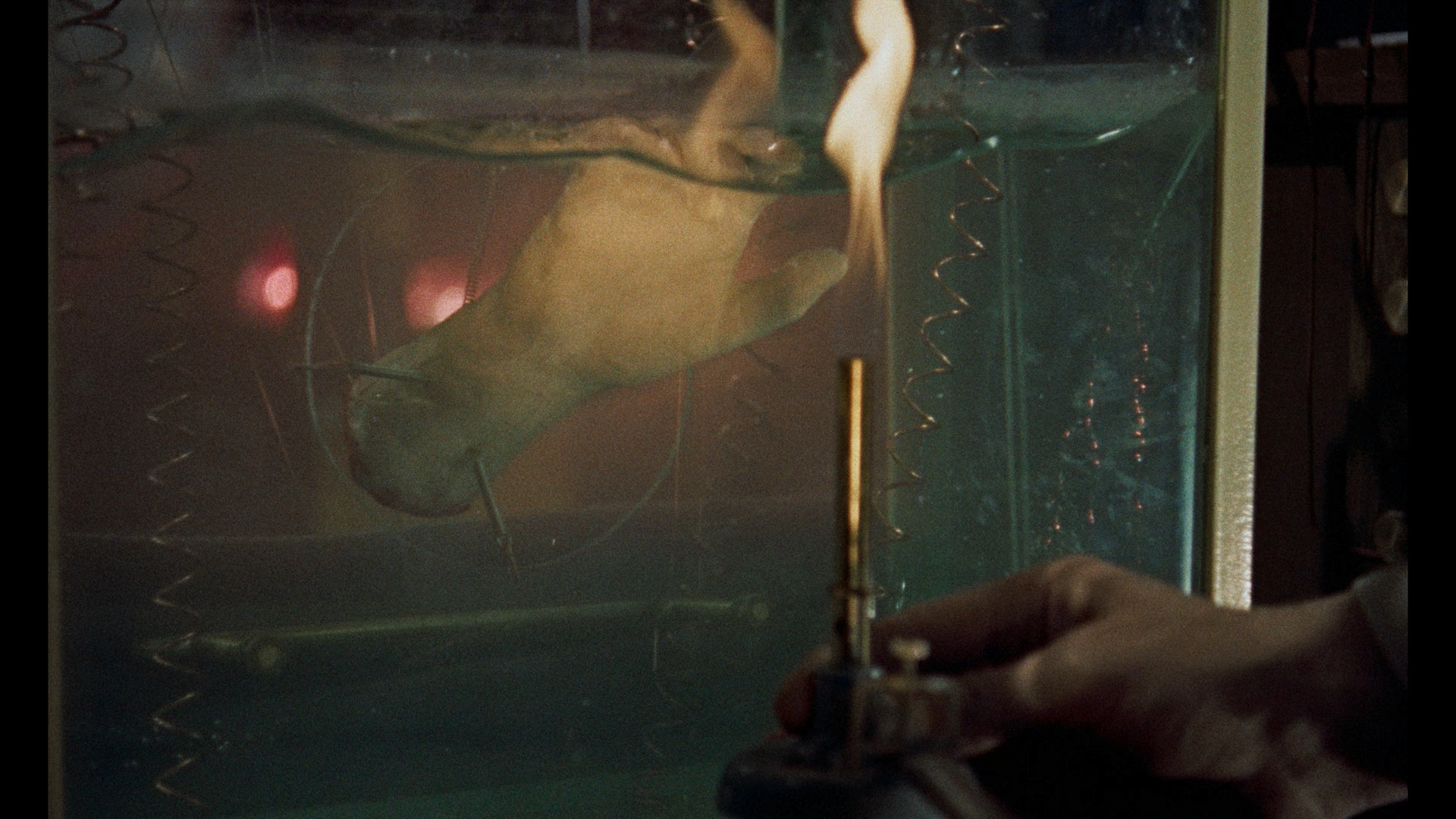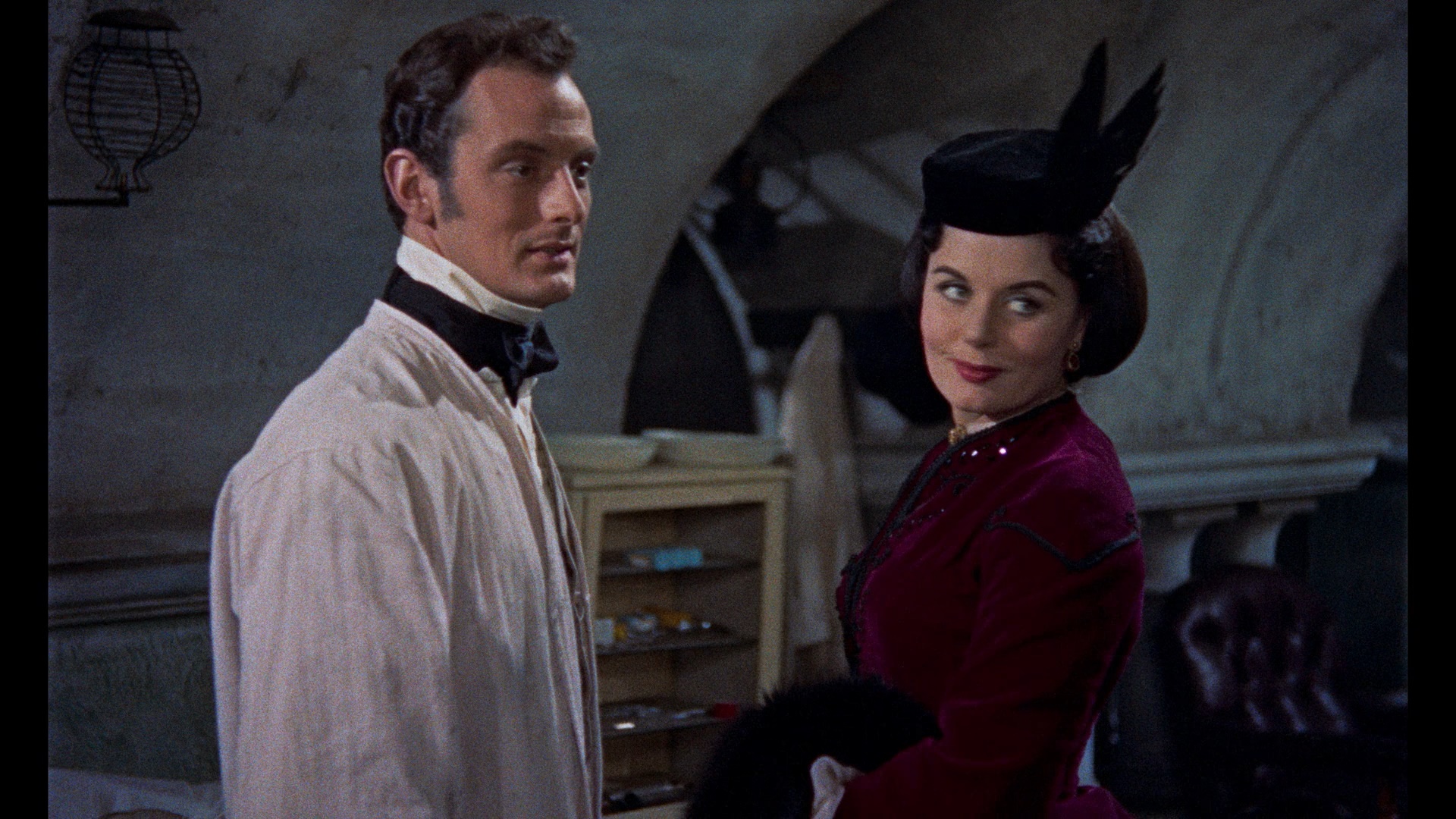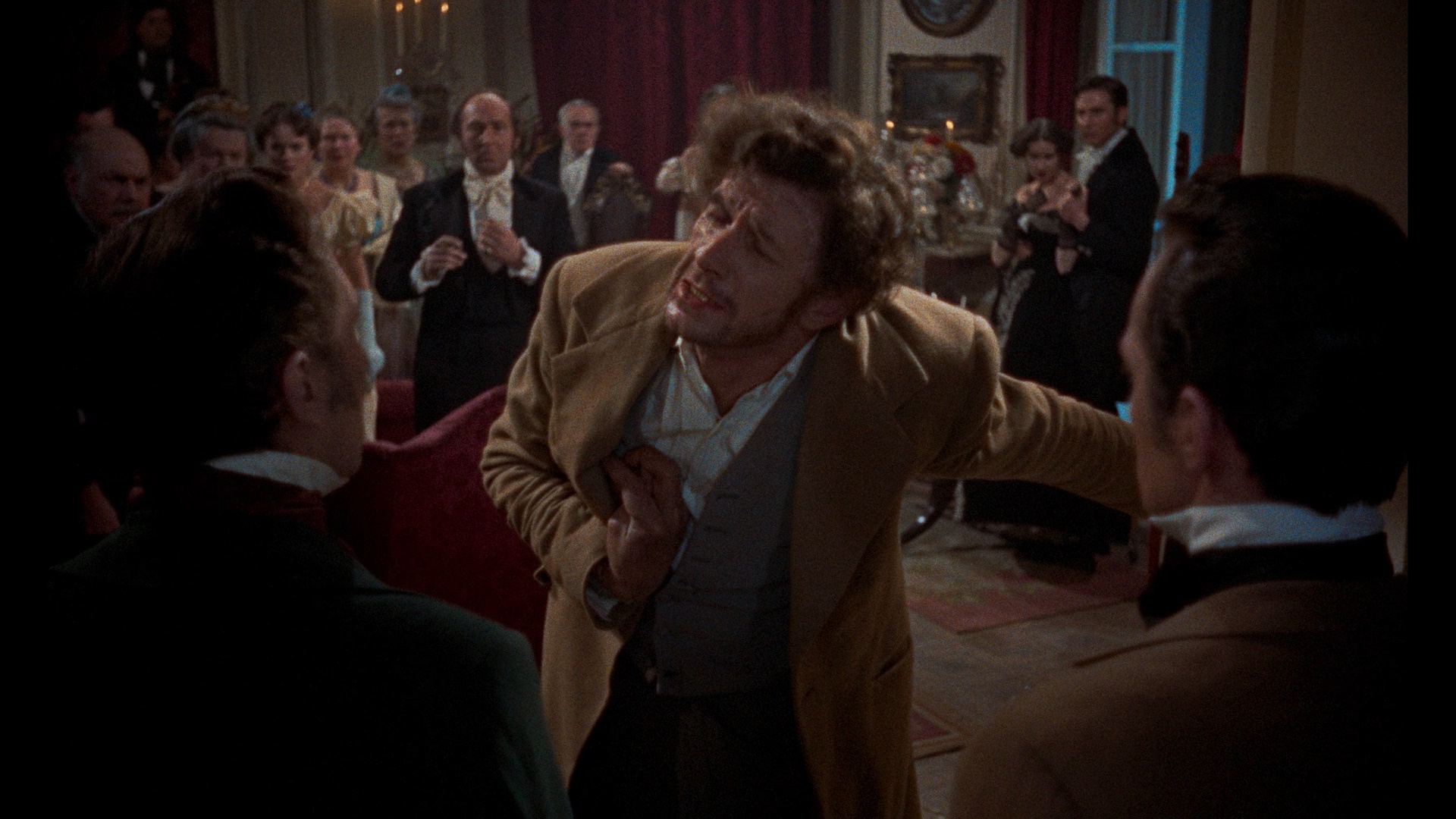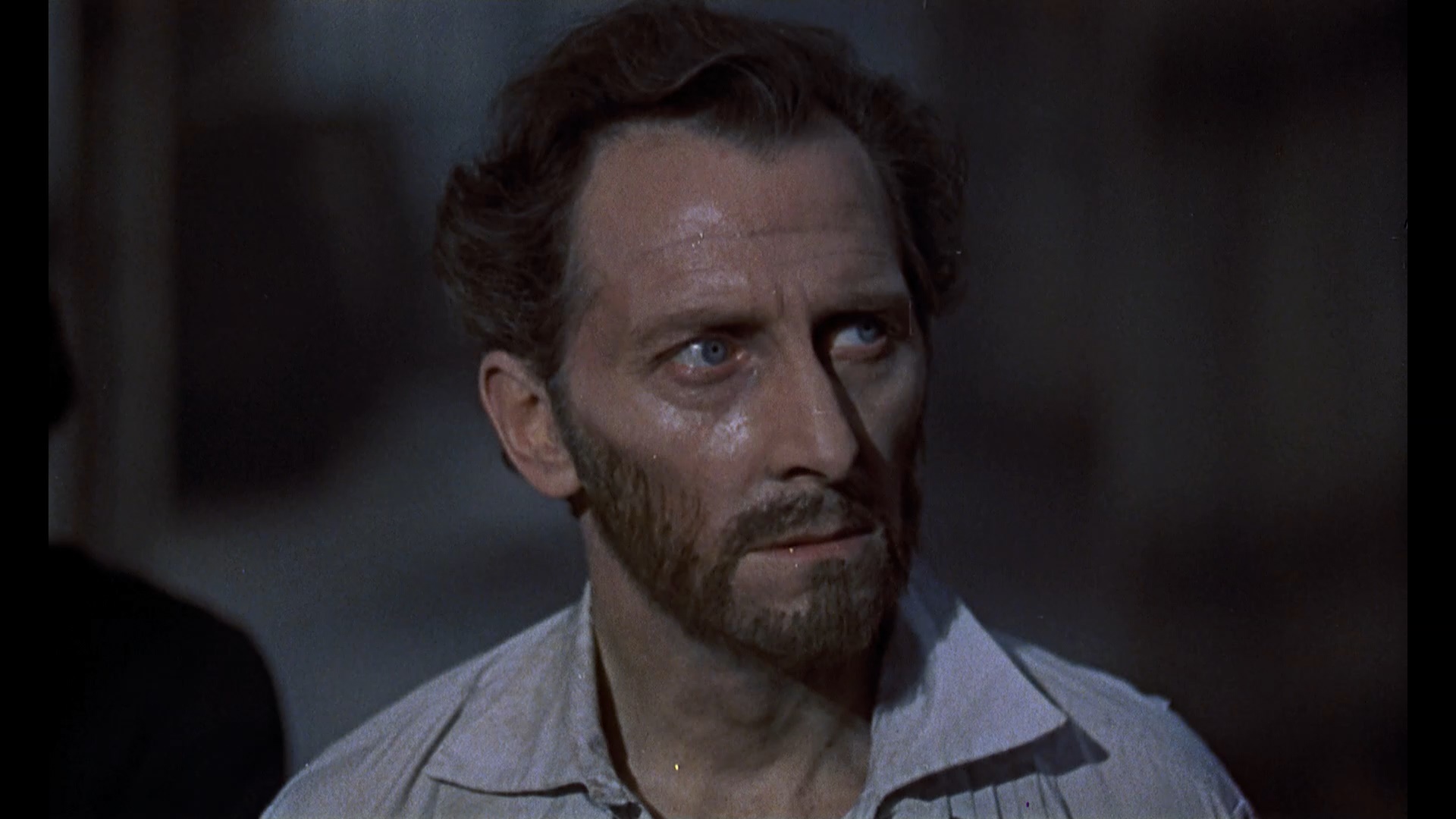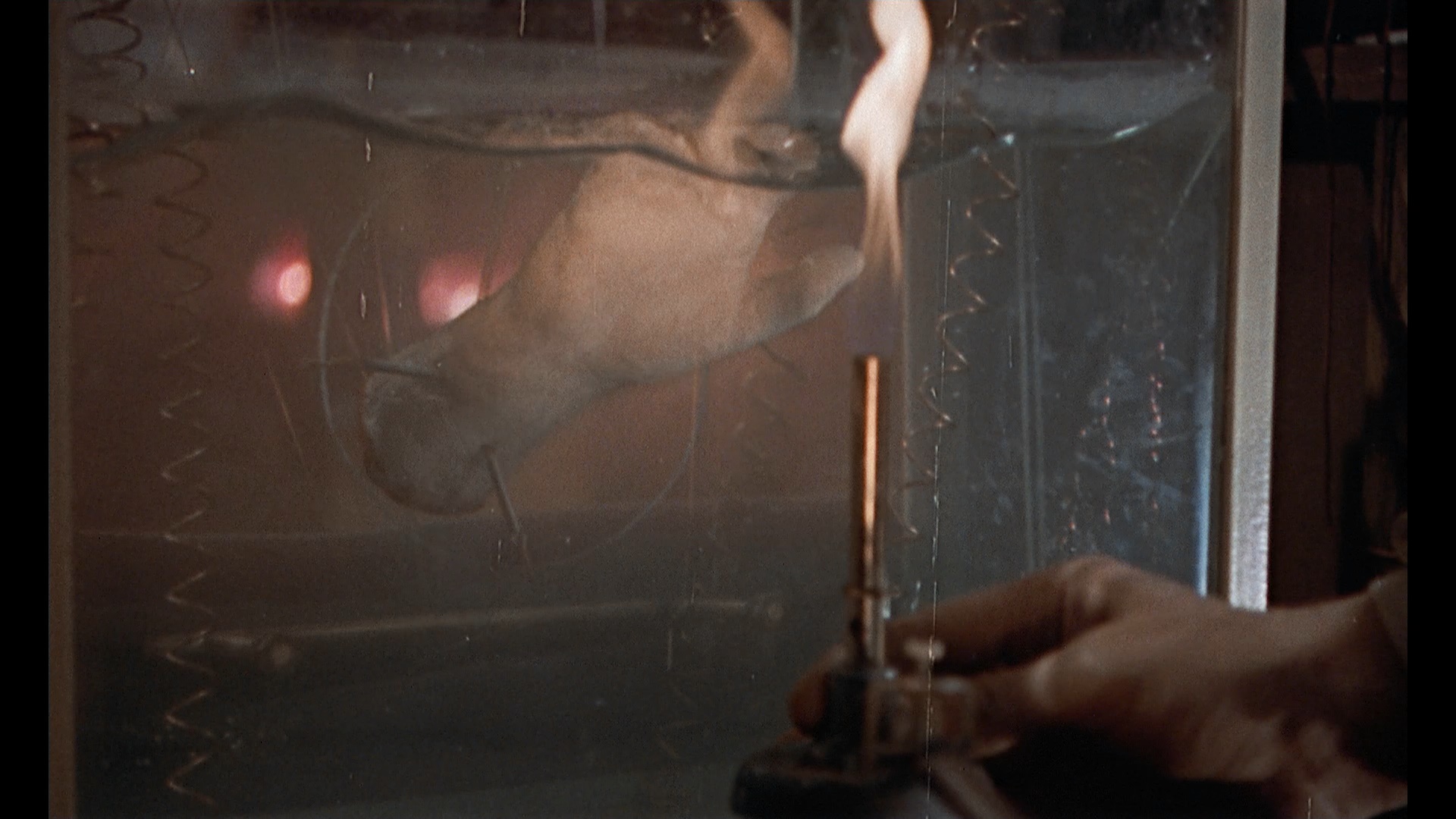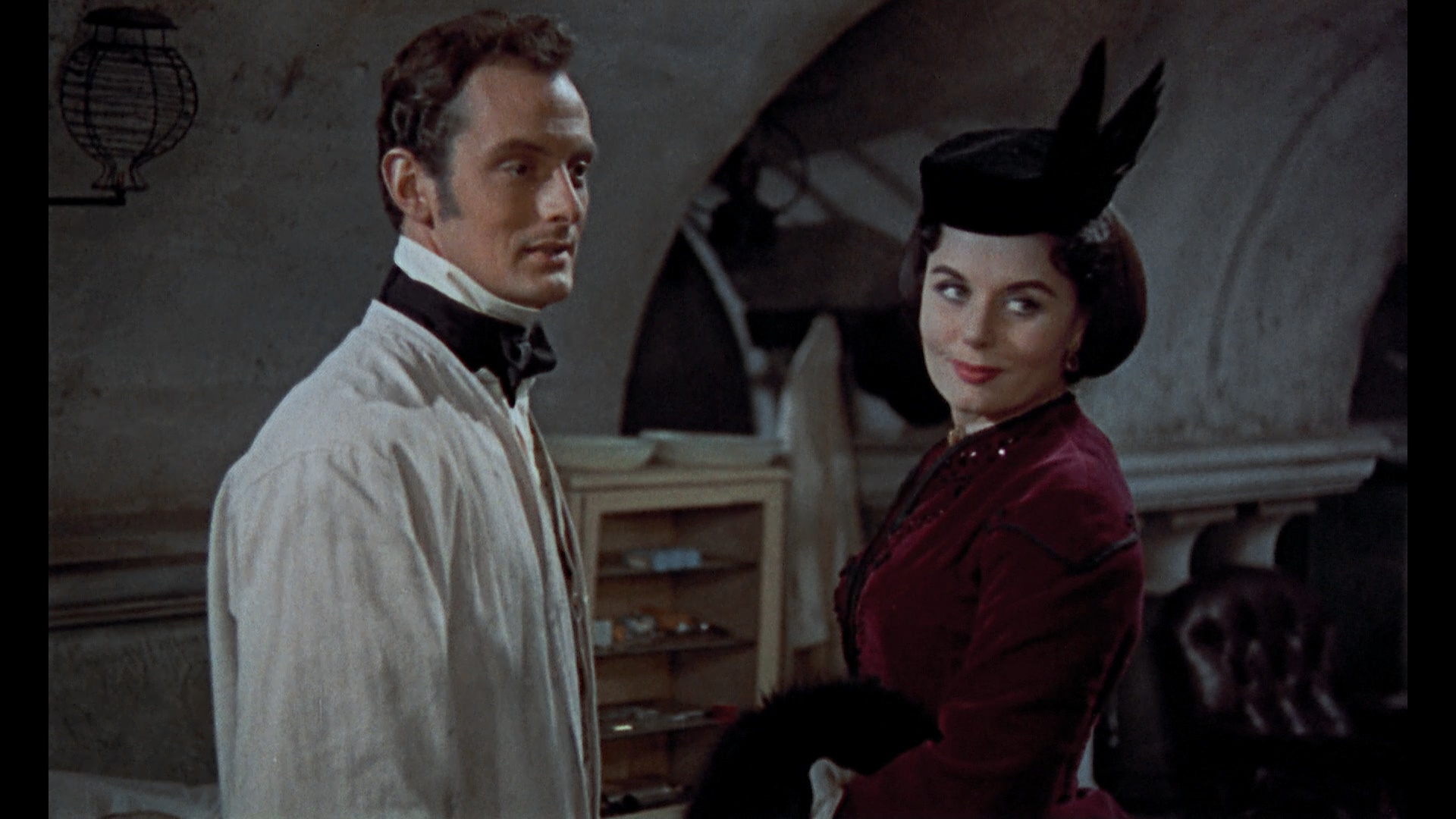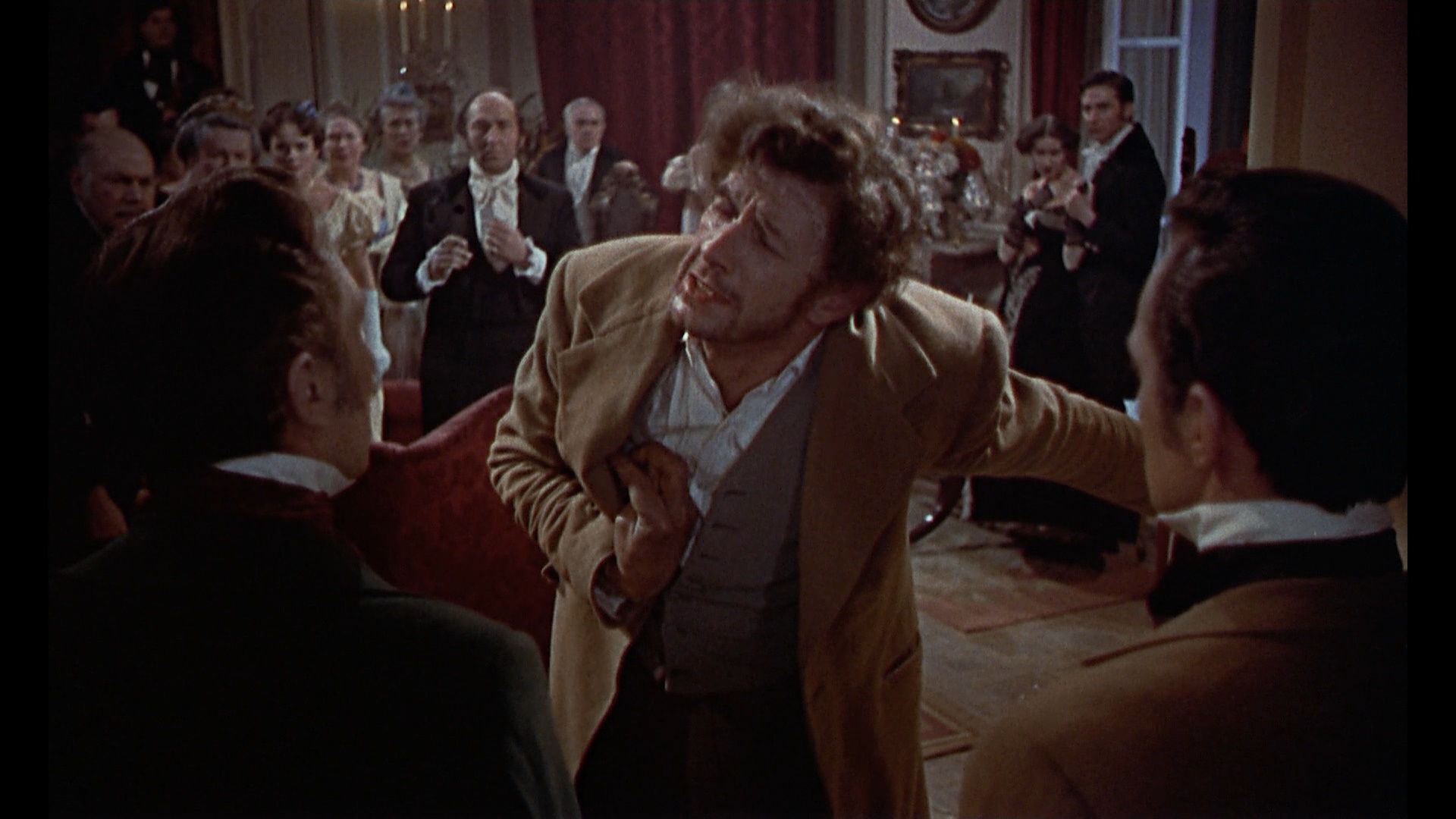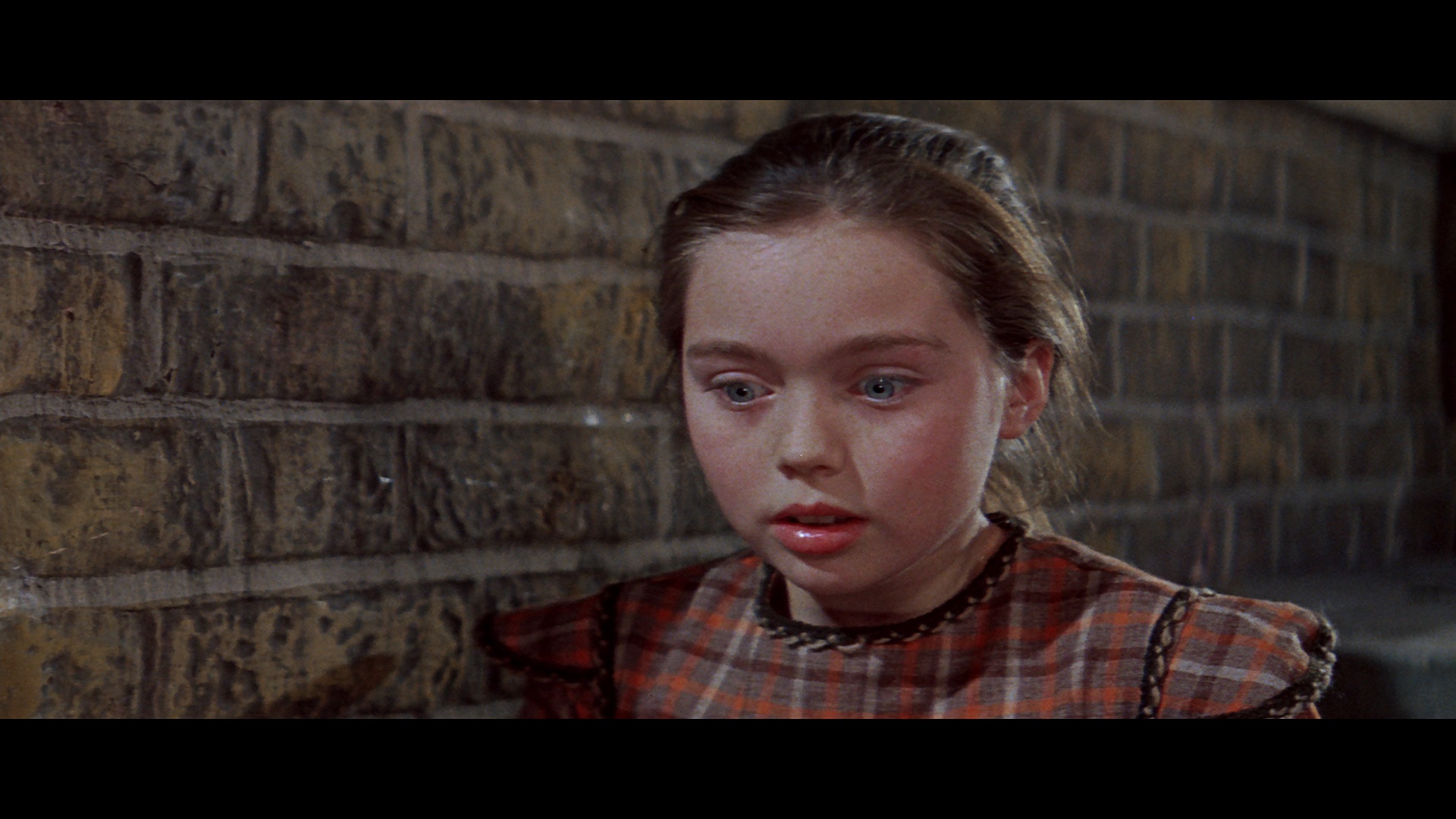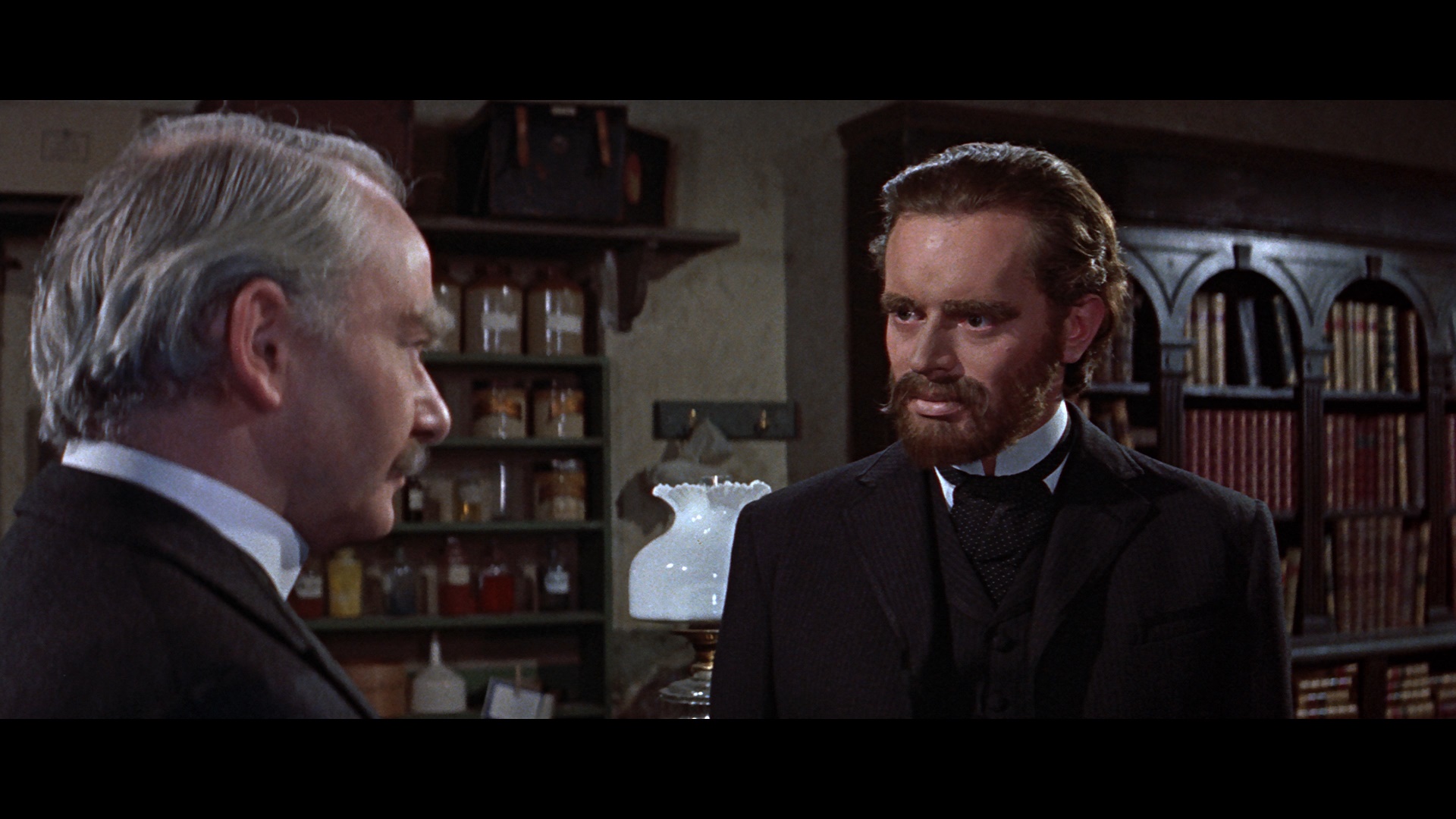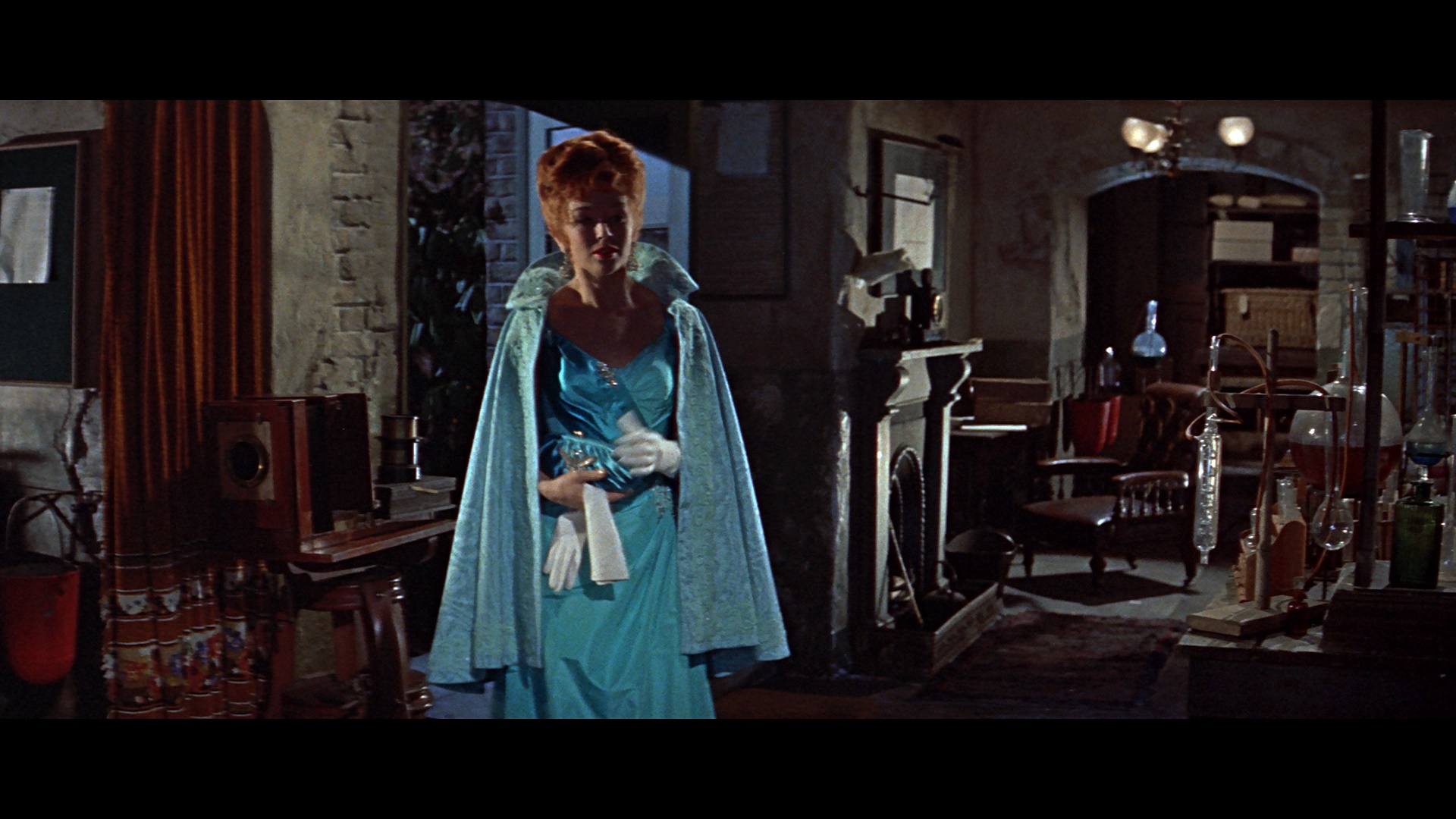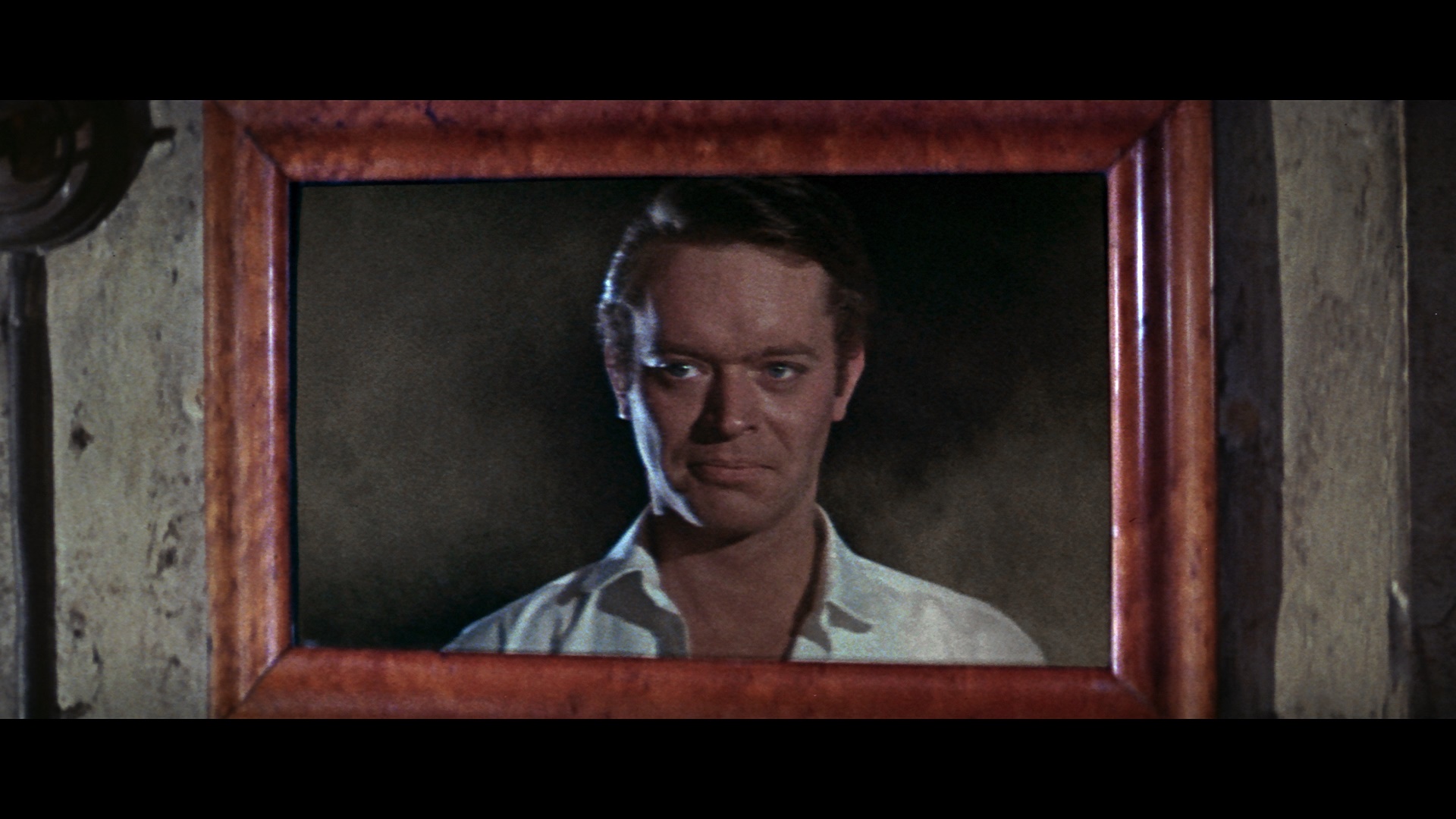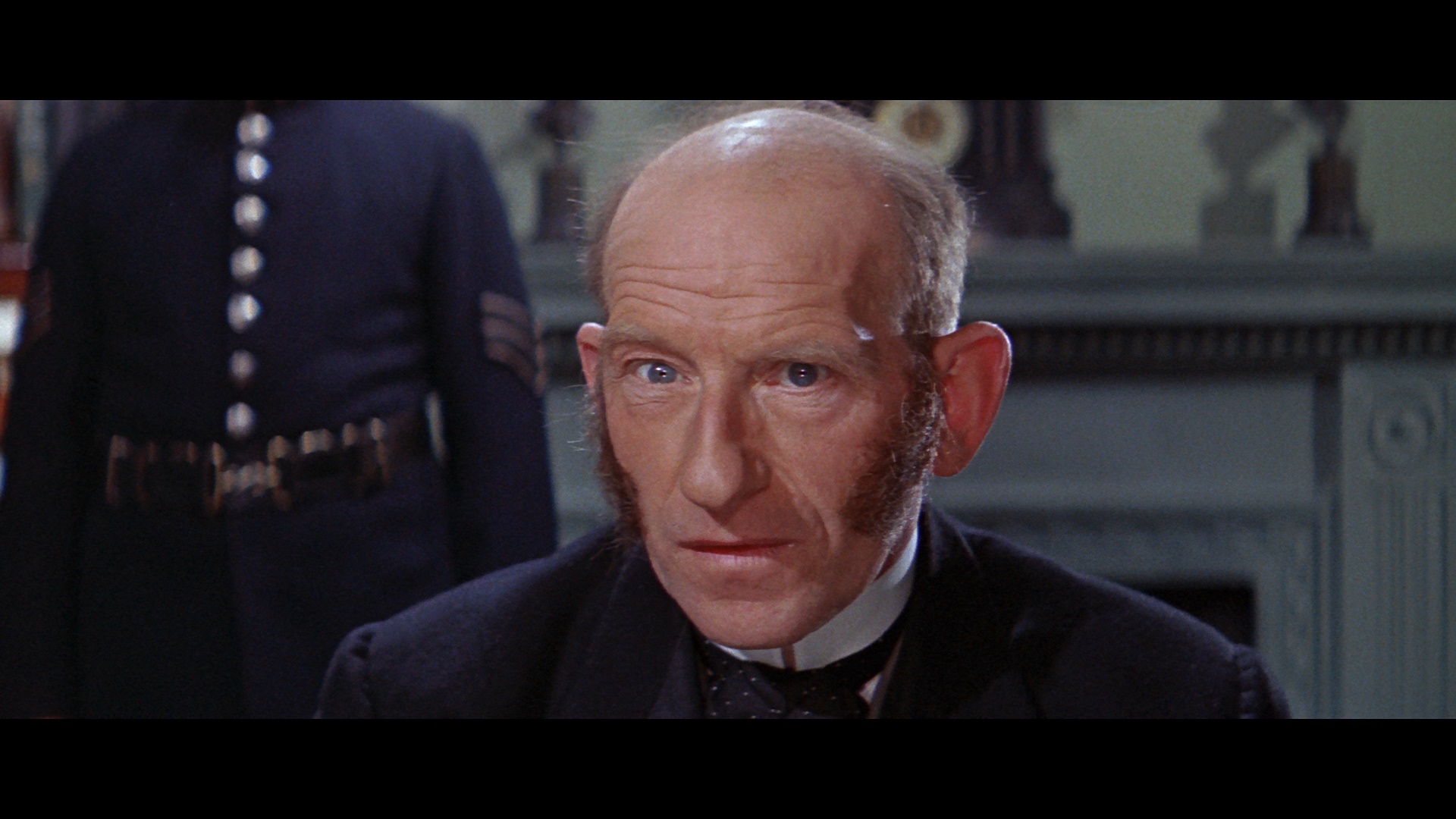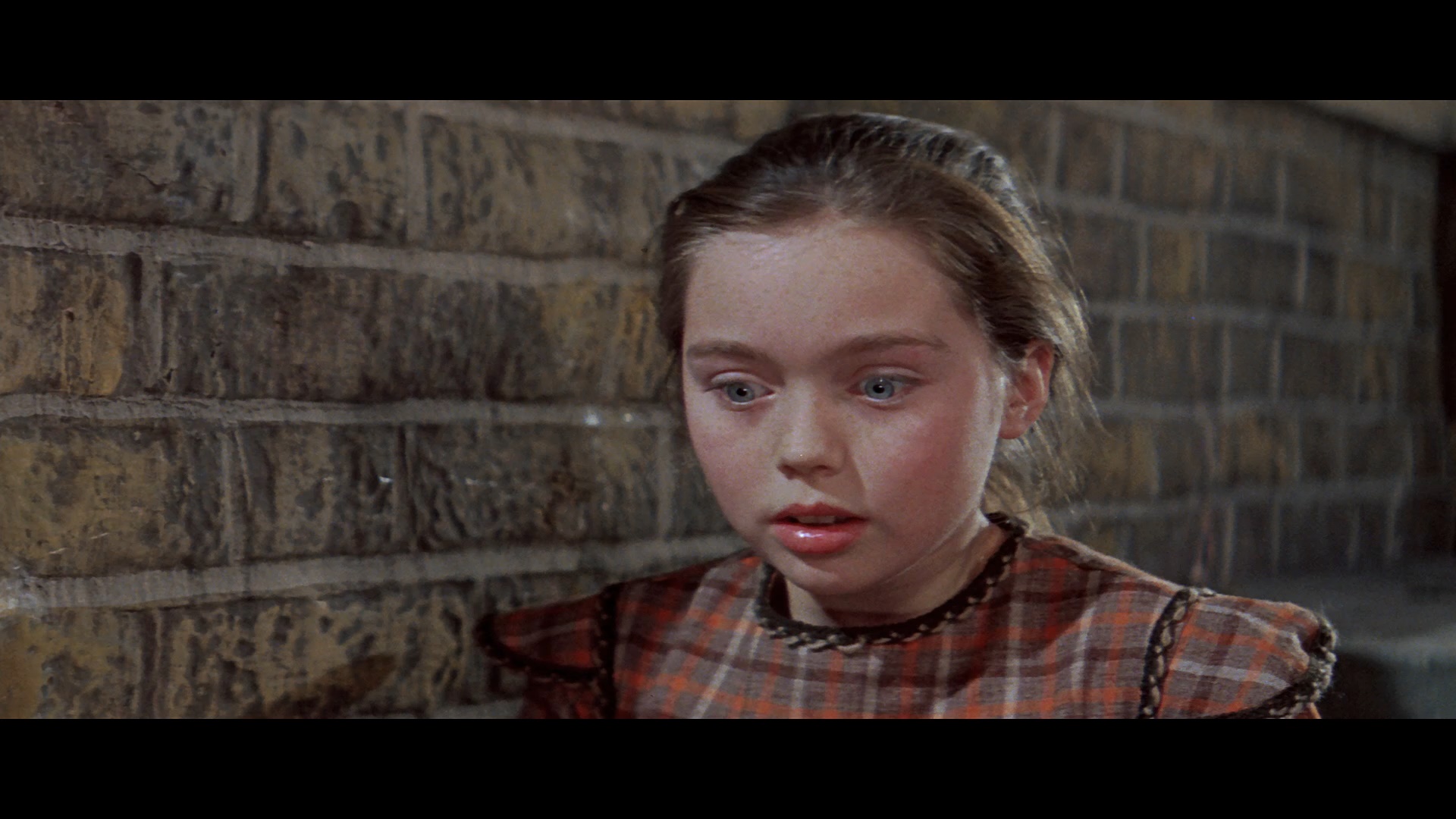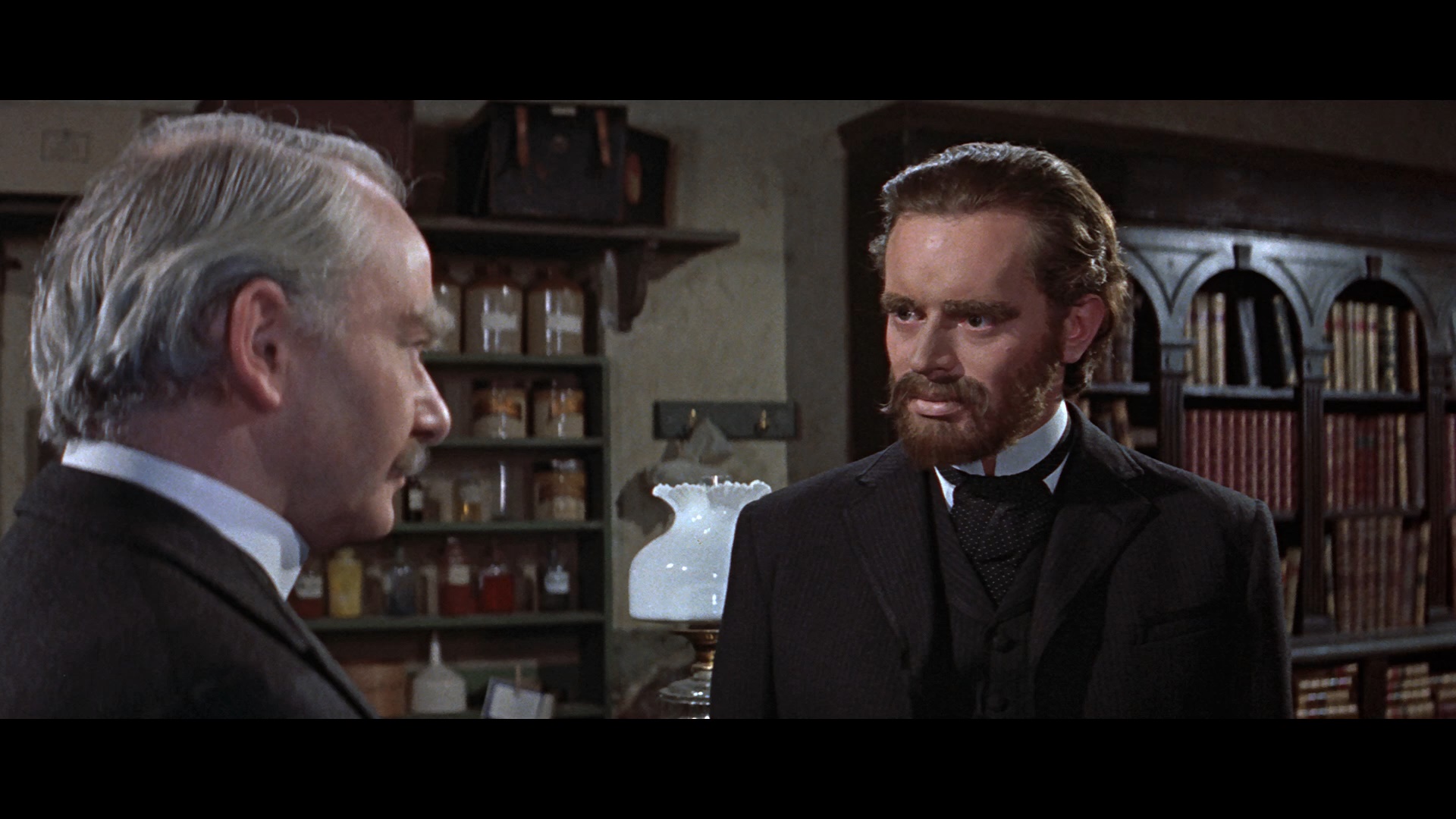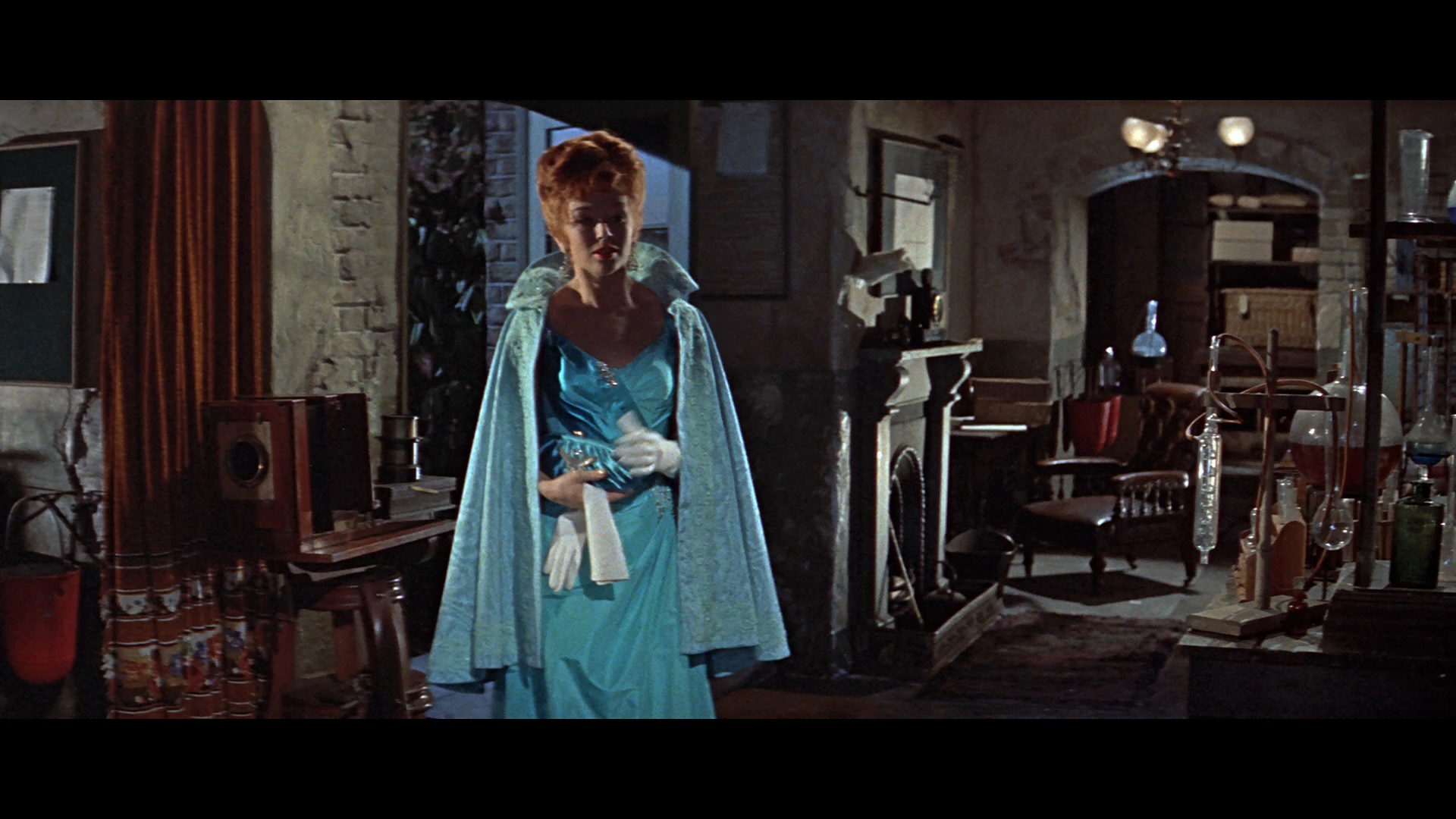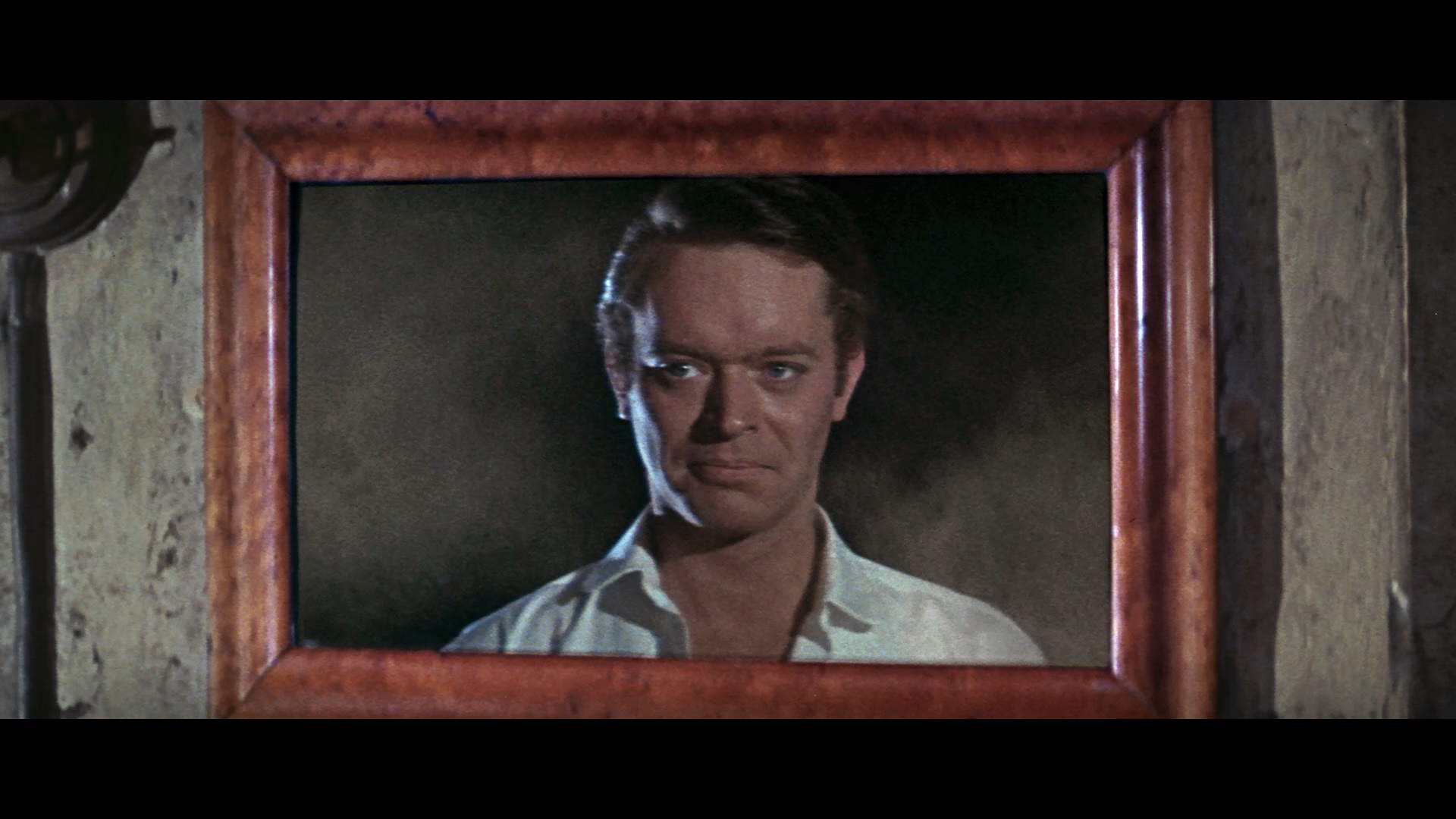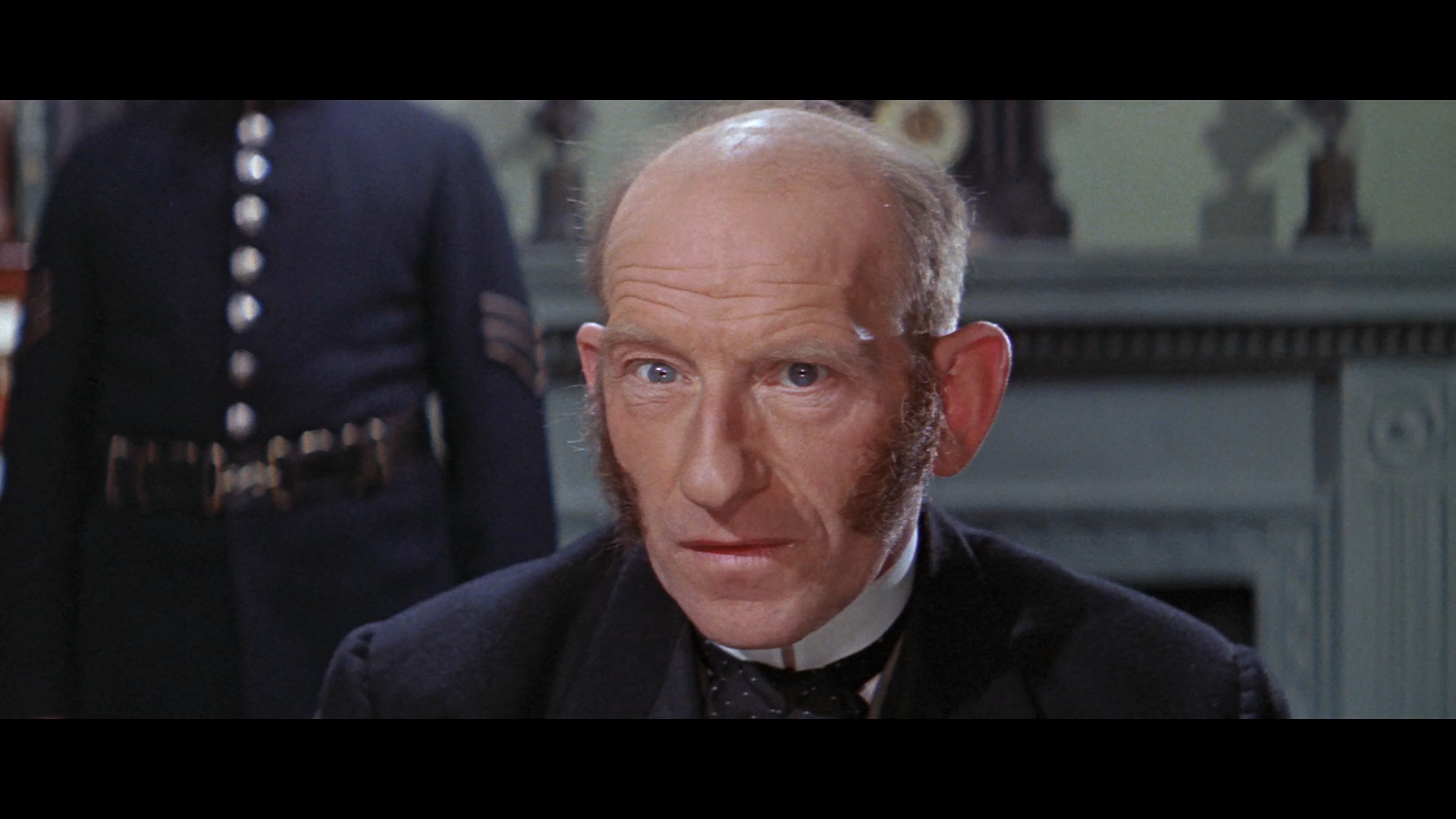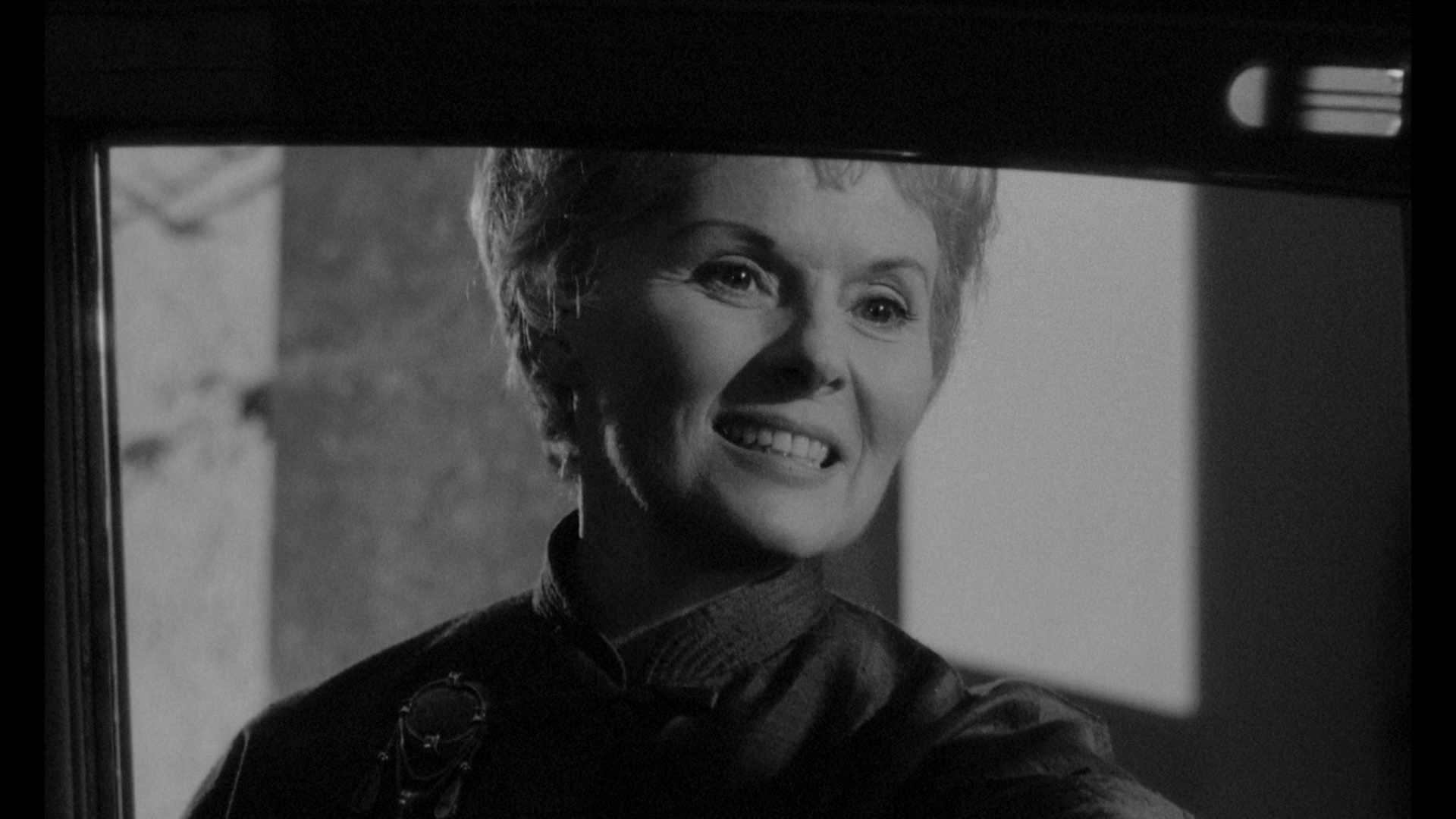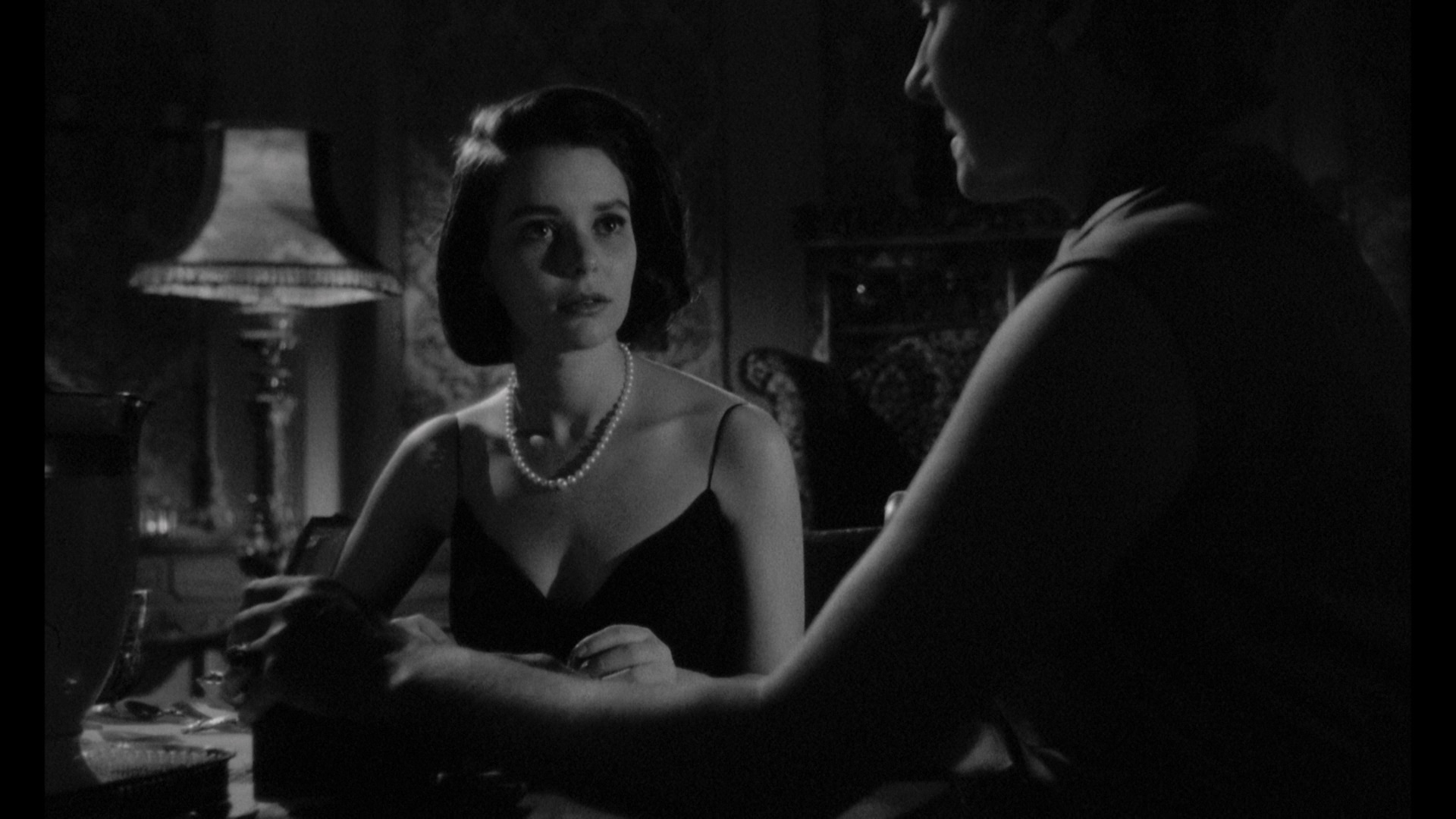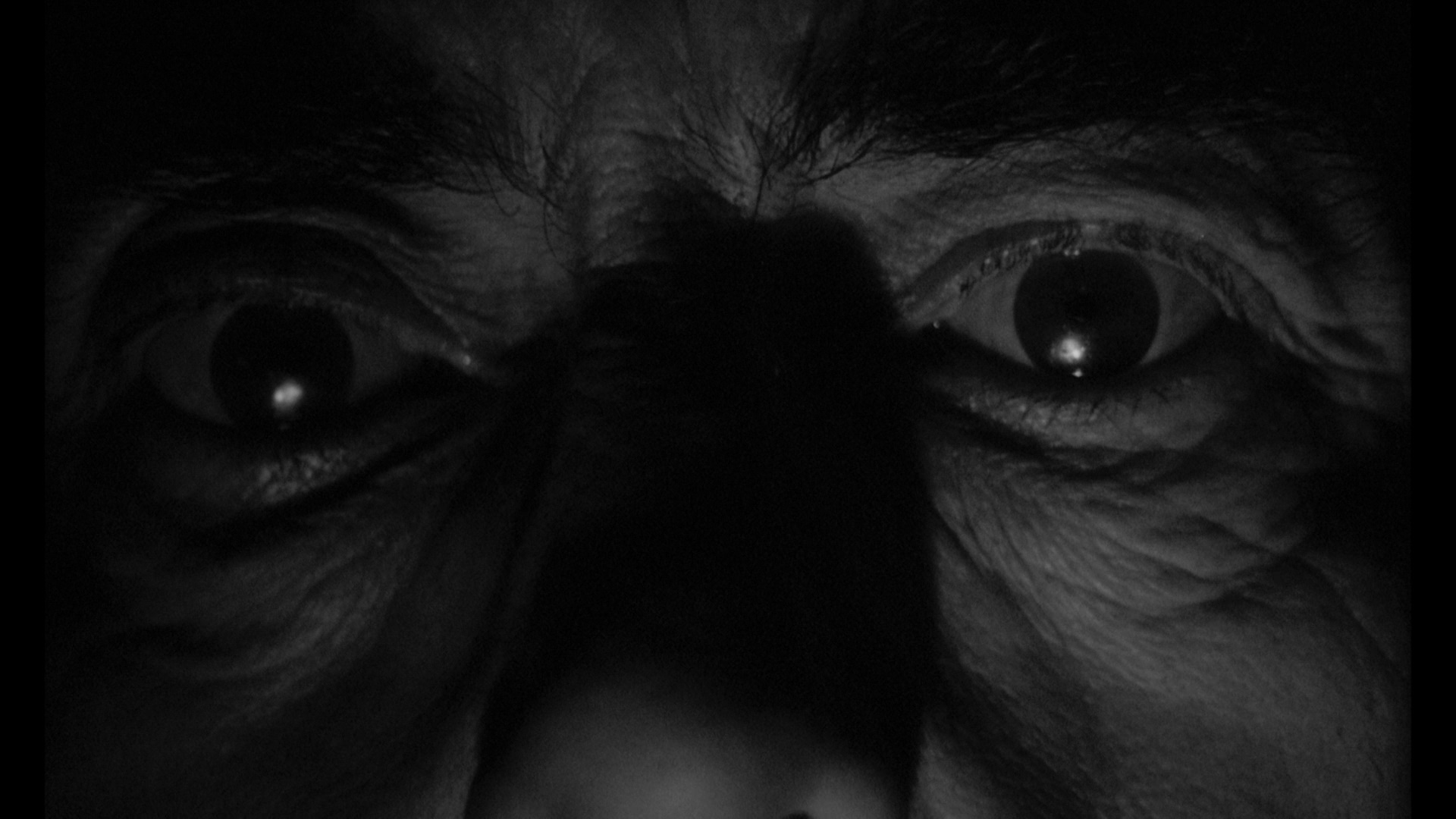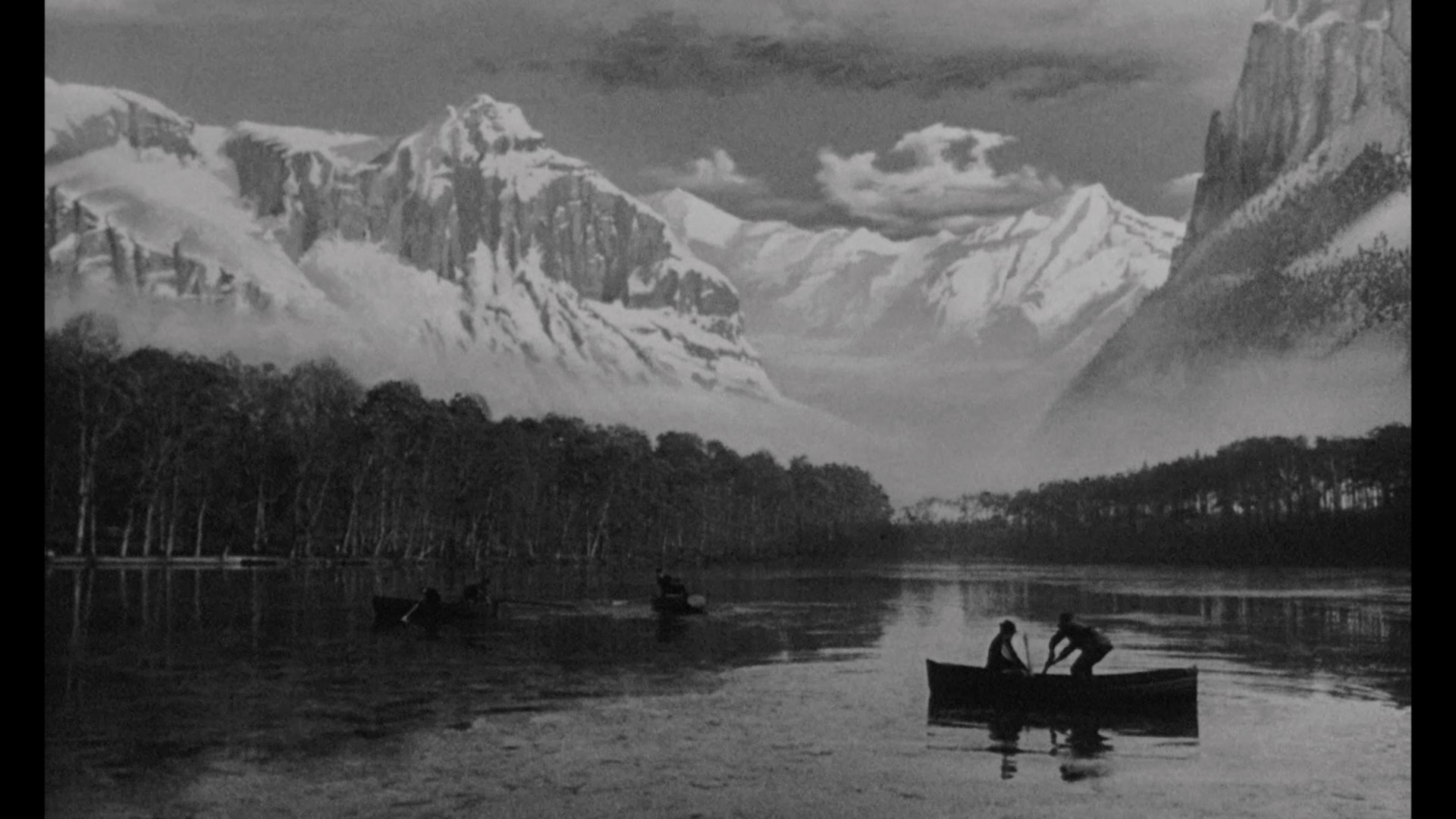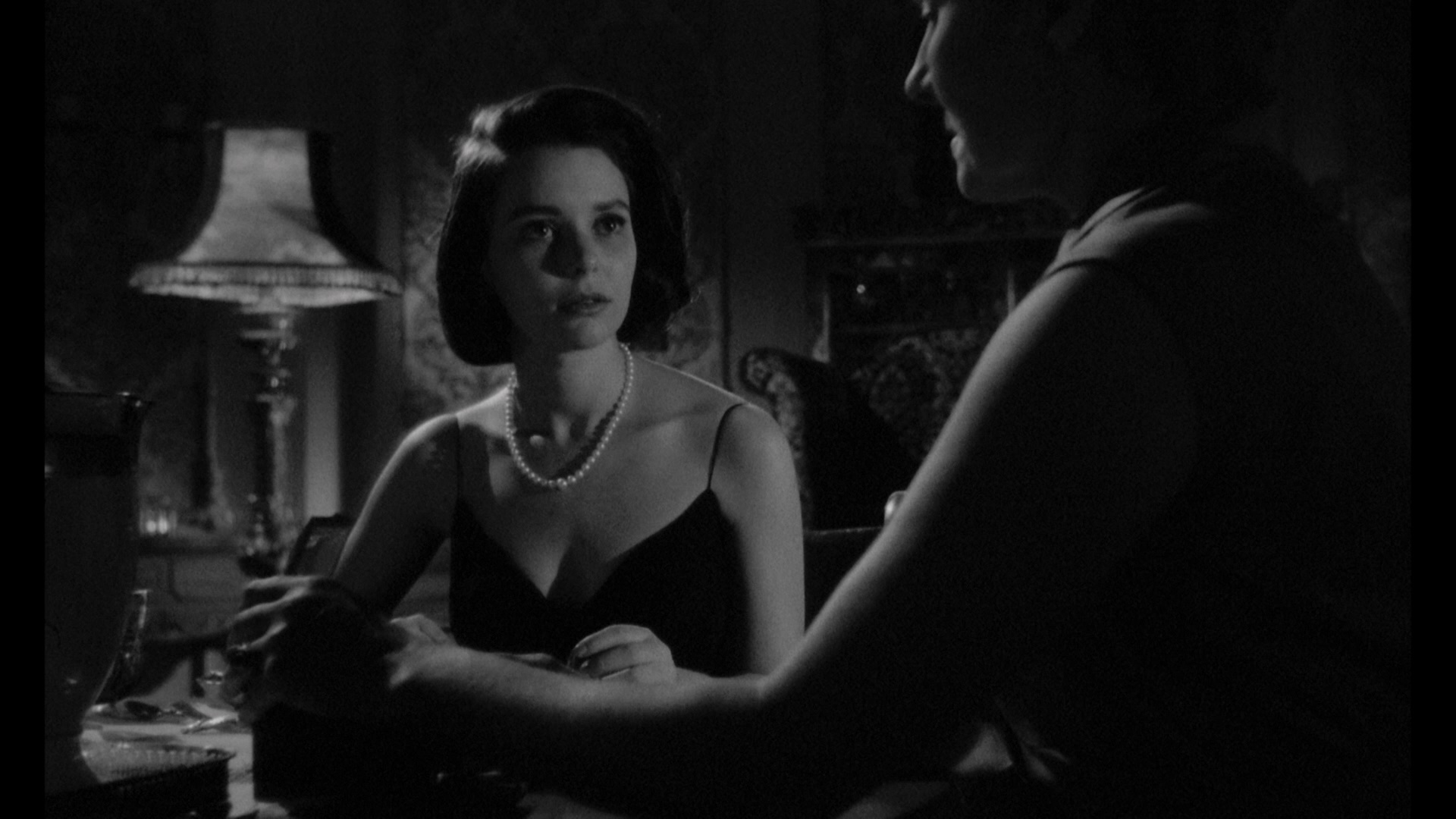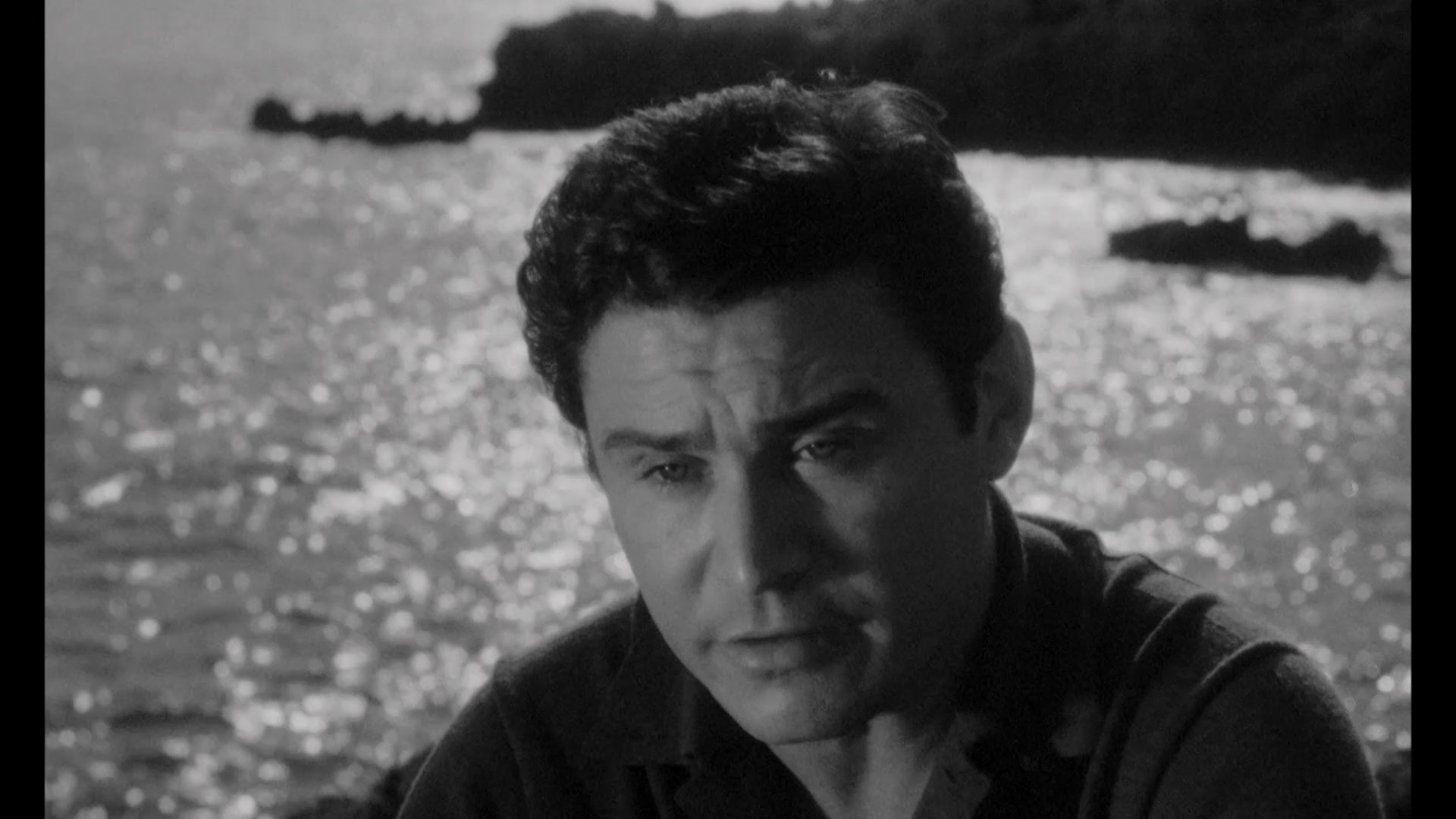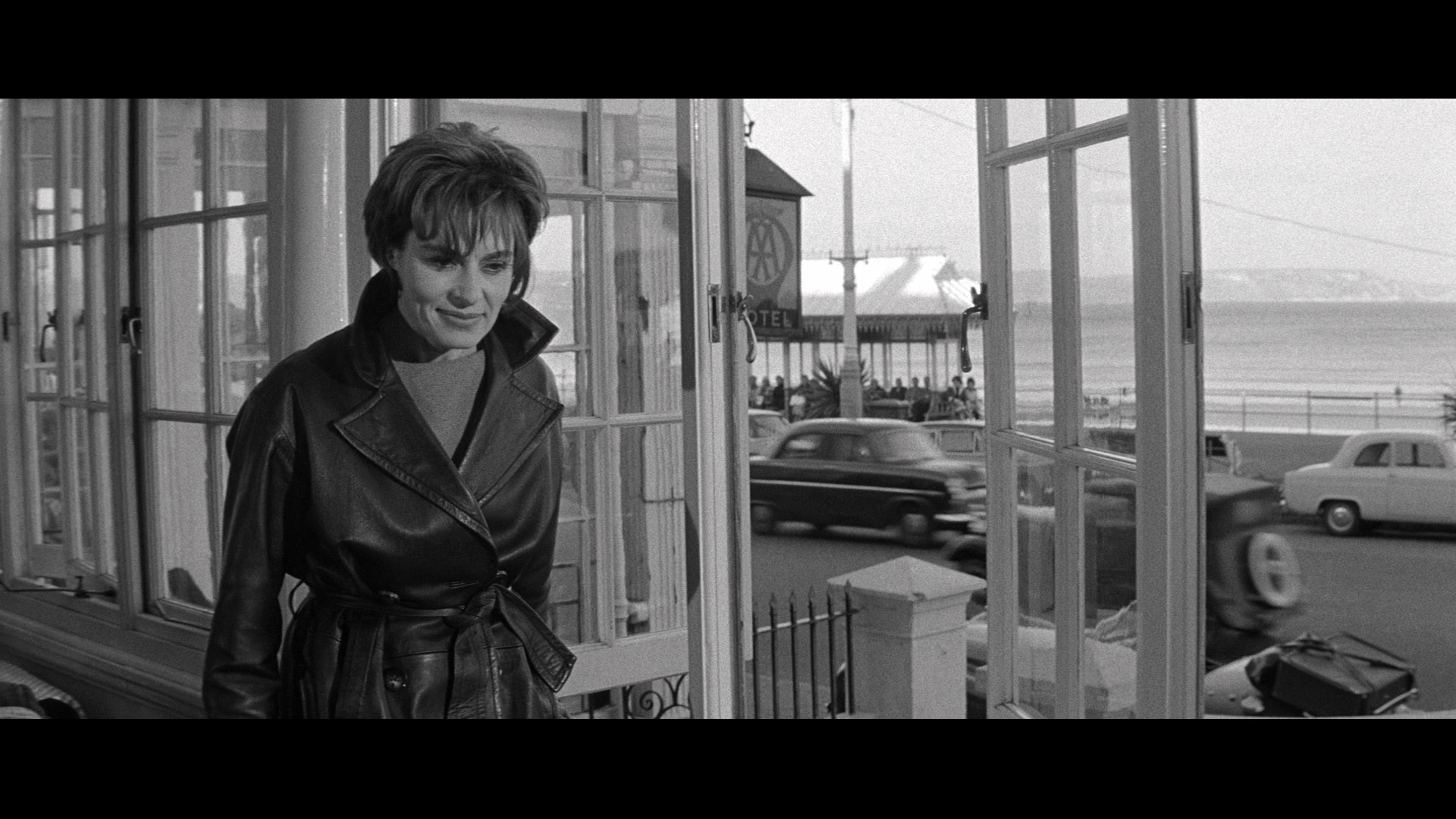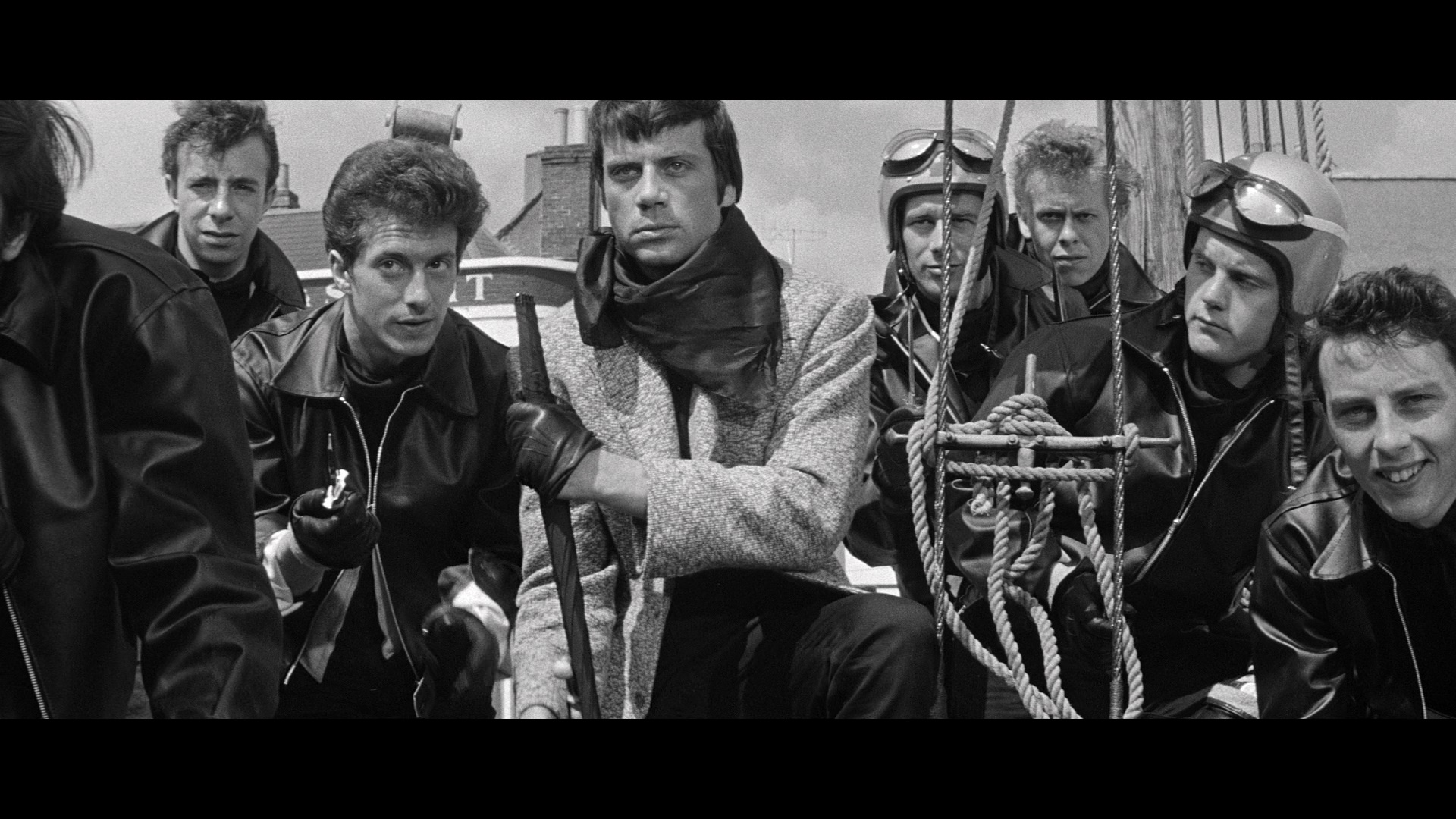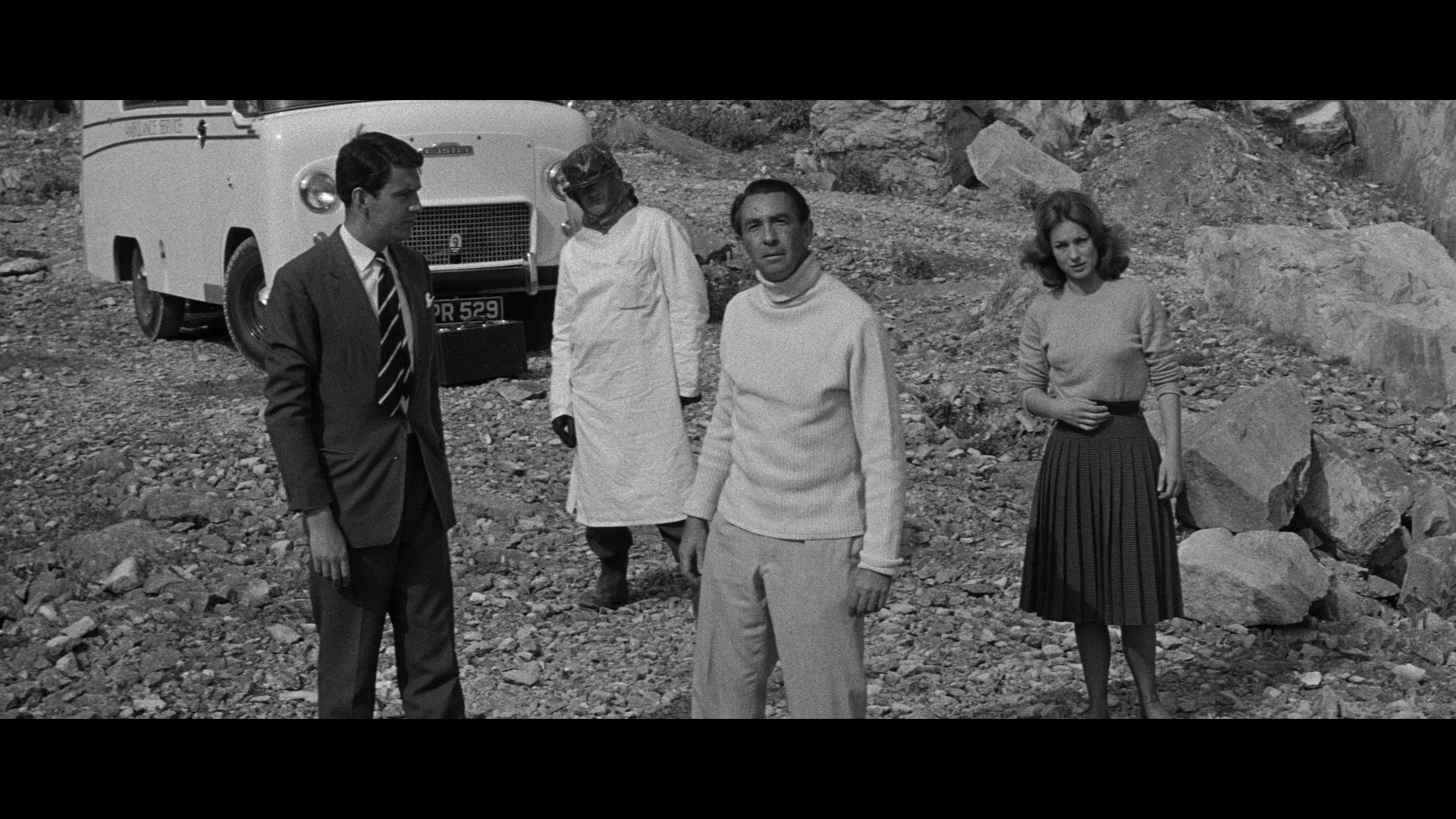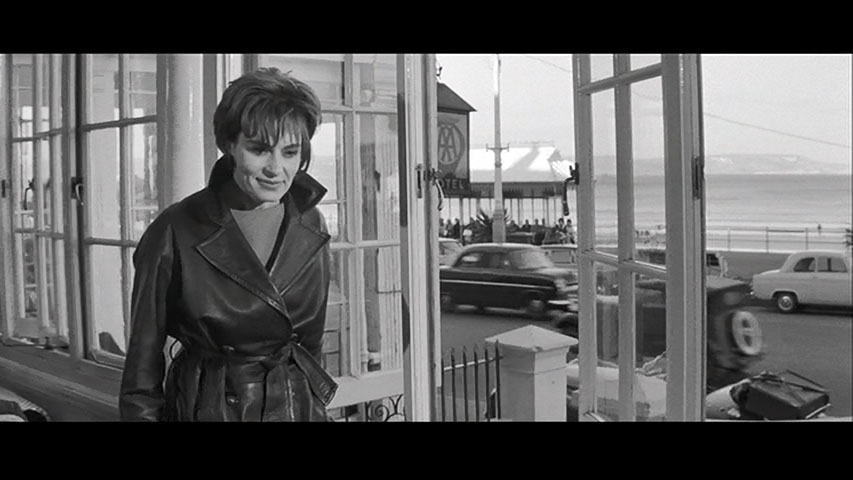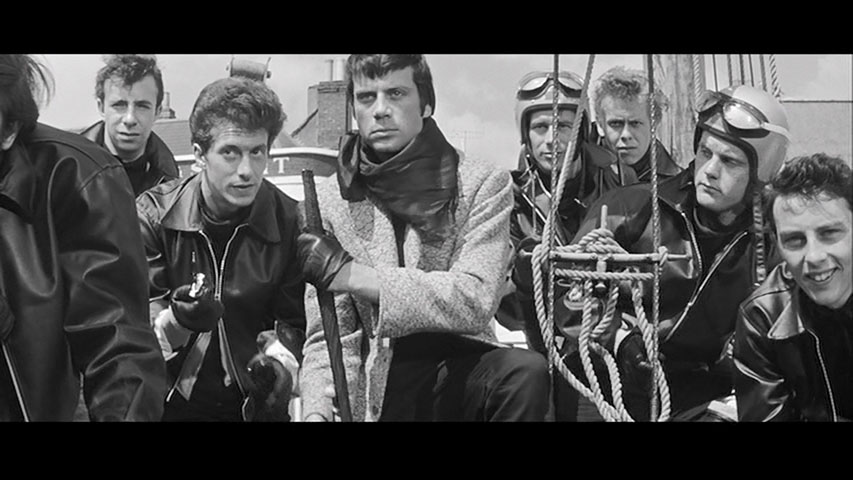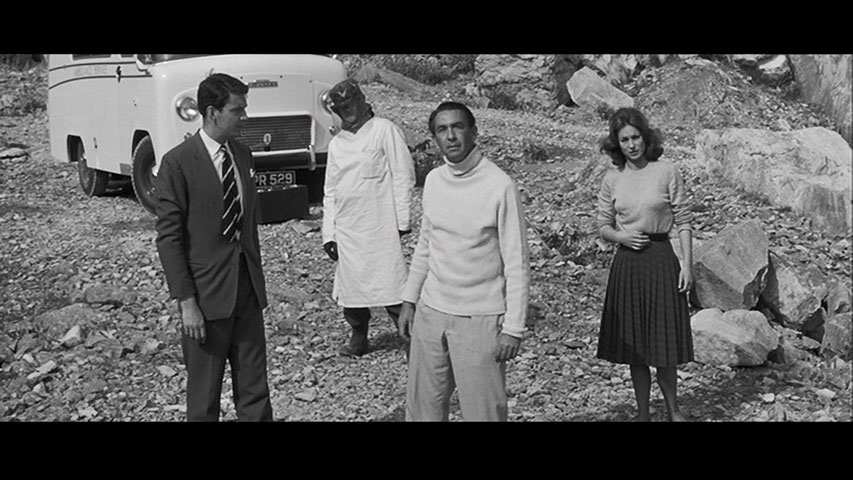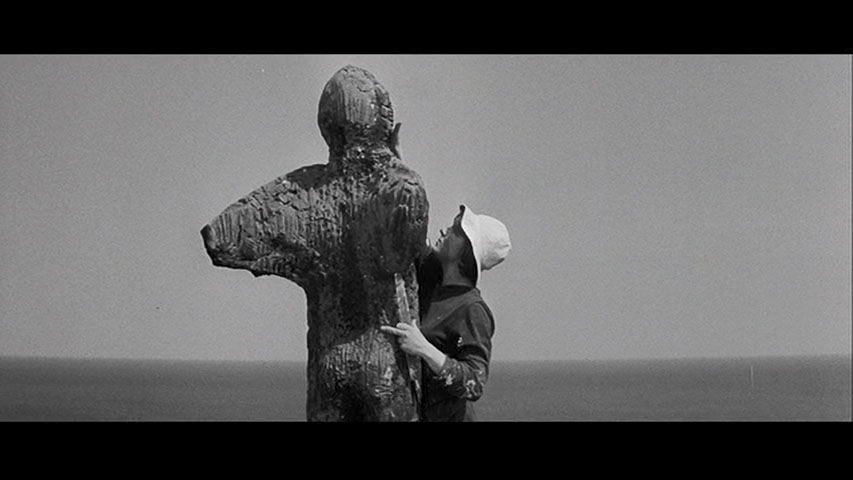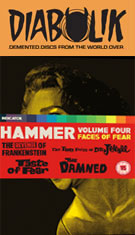
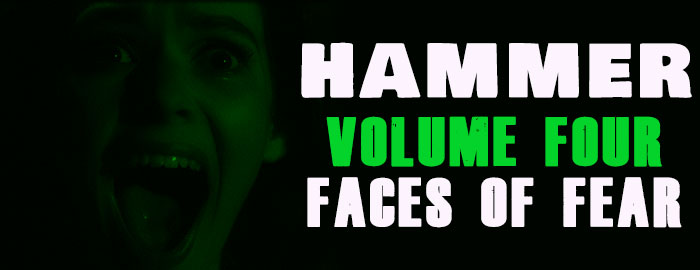
THE REVENGE OF FRANKENSTEIN THE TWO FACES OF DR. JEKYLL TASTE OF FEAR (SCREAM OF FEAR) THE DAMNED (THESE ARE THE DAMNED)
Color, 1958, 89 mins. 57 secs.
Directed by Terence Fisher
Starring Peter Cushing, Francis Matthews, Eunice Gayson, Michael Gwynn
Indicator (Blu-ray) (UK R0 HD), Mill Creek (Blu-ray & DVD) (US RA/R1 HD/NTSC), Sony (DVD) (US R0 NTSC) / WS (1.66:1) (16:9)
Color, 1960, 88 mins. 17 secs.
Directed by Terence Fisher
Starring Paul Massie, Dawn Addams, Christopher Lee, David Kossoff, Norma Marla
Indicator (Blu-ray) (UK R0 HD), Mill Creek (Blu-ray & DVD) (US RA/R1 HD/NTSC), Sony (DVD) (US R0 NTSC) / WS (1.66:1) (16:9)
B&W, 1961, 81 mins. 37 secs. / 81 mins. 29 secs.
Directed by Seth Holt
Starring Susan Strasberg, Ann Todd, Ronald Lewis, Christopher Lee
Indicator (Blu-ray) (UK R0 HD), Mill Creek (Blu-ray & DVD) (US RA/R1 HD/NTSC), Sony (DVD) (US R0 NTSC) / WS (1.66:1) (16:9), ViaVision/Madman (Blu-ray) (Australia R0 HD) / WS (1.78:1) (16:9)
B&W, 1962, 95 mins. 18 secs. / 87 mins. 26 secs.
Directed by Joseph Losey
Starring Macdonald Carey, Shirley Anne Field, Viveca Lindfors, Oliver Reed, Alexander Knox, Walter Gotell, James Villiers
Indicator (Blu-ray) (UK R0 HD), Explosive-Media (Blu-ray & DVD) (Germany RB/R2 HD/PAL), Sony (DVD) (US R0 NTSC) / WS (2.35:1) (16:9)
 on-and-off partnership
on-and-off partnership 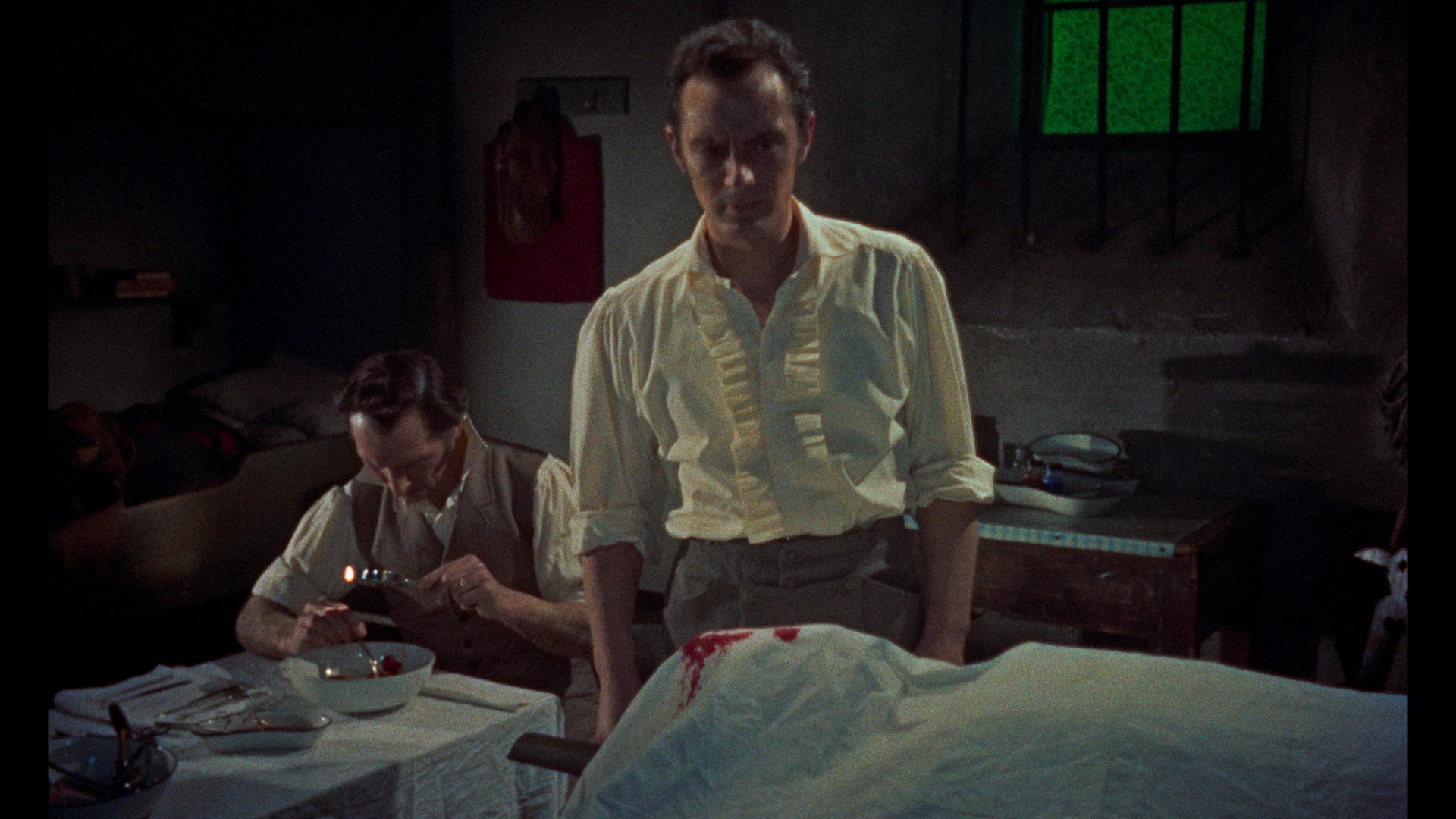 between Hammer Films and Columbia Pictures that ended in the early '70s yielded some of the former's finest films both within and outside the horror genre, which has been established with a line of essential U.K. boxed sets from Indicator including Hammer Volume One: Fear Warning, Hammer Volume Two: Criminal Intent, and Hammer Volume Three: Blood & Terror. Only that first set encompassed bona fide horror films, which left some very key titles hanging that had to get the deluxe treatment sooner or later. In 2019 that came to pass with Hammer Volume Four: Faces of Fear, a limited 6,000-unit set featuring four knockout titles that make this the crown jewel of the sets and a must have for any Hammerphile.
between Hammer Films and Columbia Pictures that ended in the early '70s yielded some of the former's finest films both within and outside the horror genre, which has been established with a line of essential U.K. boxed sets from Indicator including Hammer Volume One: Fear Warning, Hammer Volume Two: Criminal Intent, and Hammer Volume Three: Blood & Terror. Only that first set encompassed bona fide horror films, which left some very key titles hanging that had to get the deluxe treatment sooner or later. In 2019 that came to pass with Hammer Volume Four: Faces of Fear, a limited 6,000-unit set featuring four knockout titles that make this the crown jewel of the sets and a must have for any Hammerphile. 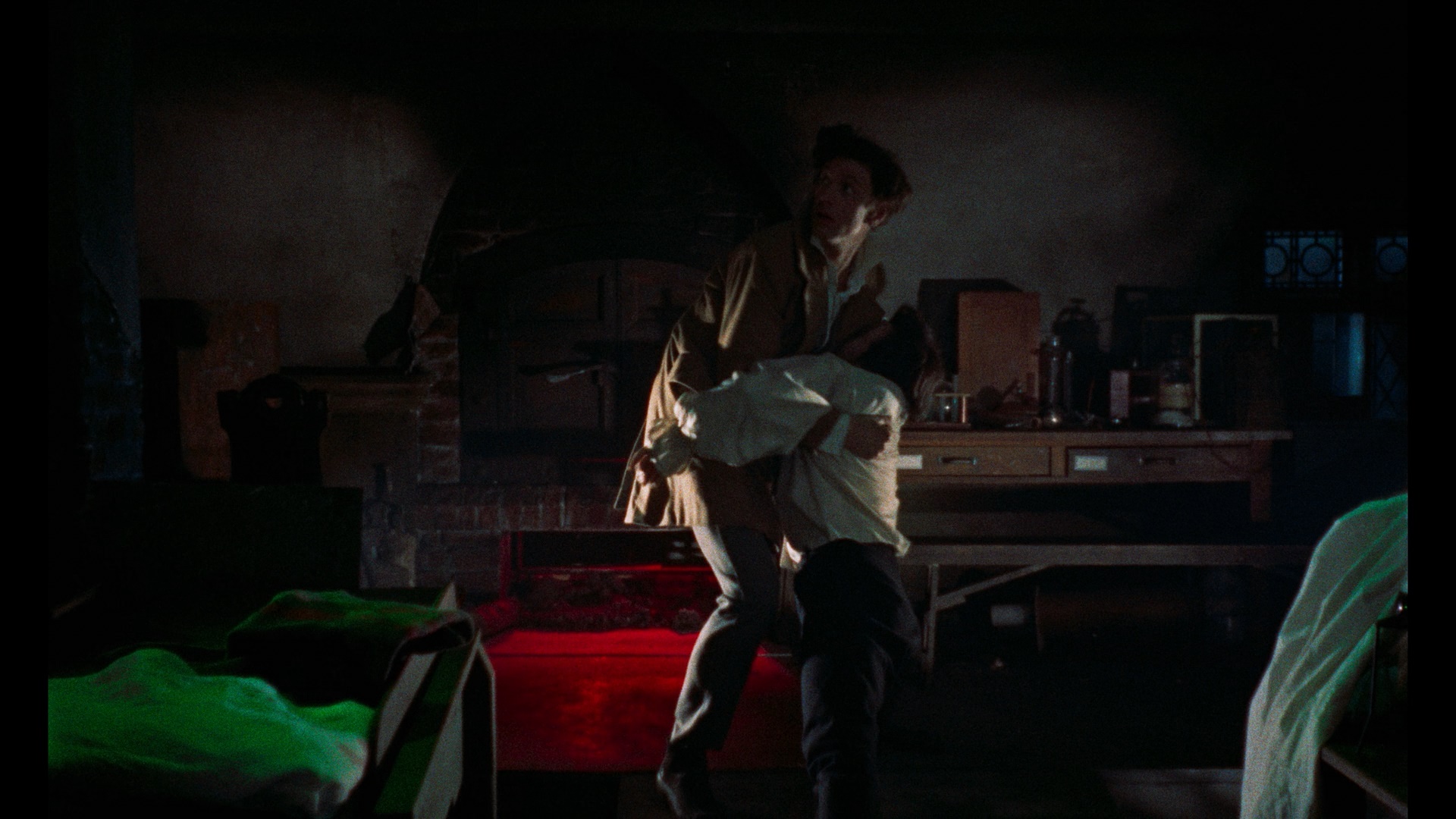 decision to bring back director Terence Fisher was a wise one as he proves
decision to bring back director Terence Fisher was a wise one as he proves 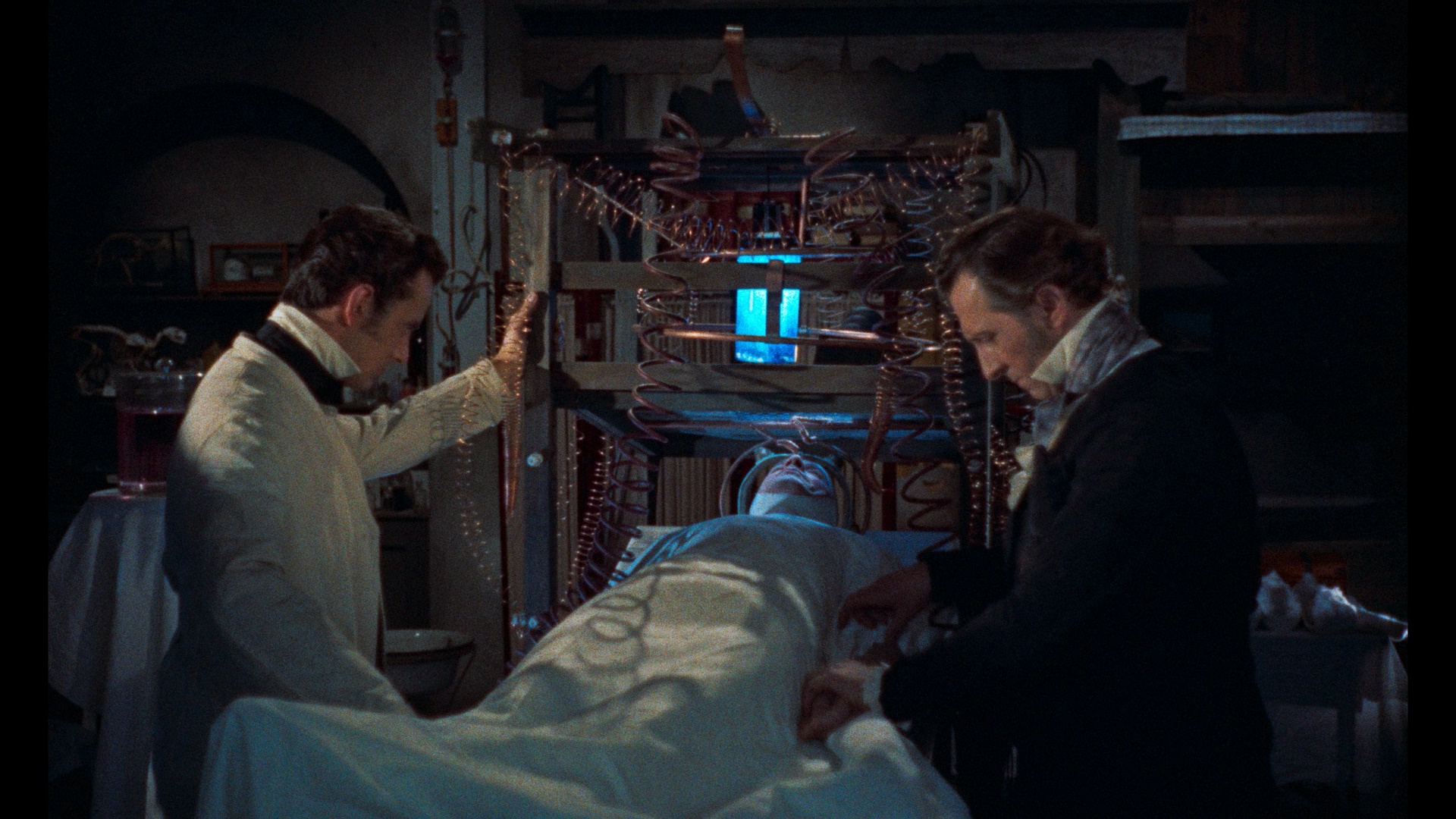 himself again to be Hammer's most valuable asset, delivering a swift and efficient shocker that delivers exactly what it should.
himself again to be Hammer's most valuable asset, delivering a swift and efficient shocker that delivers exactly what it should. 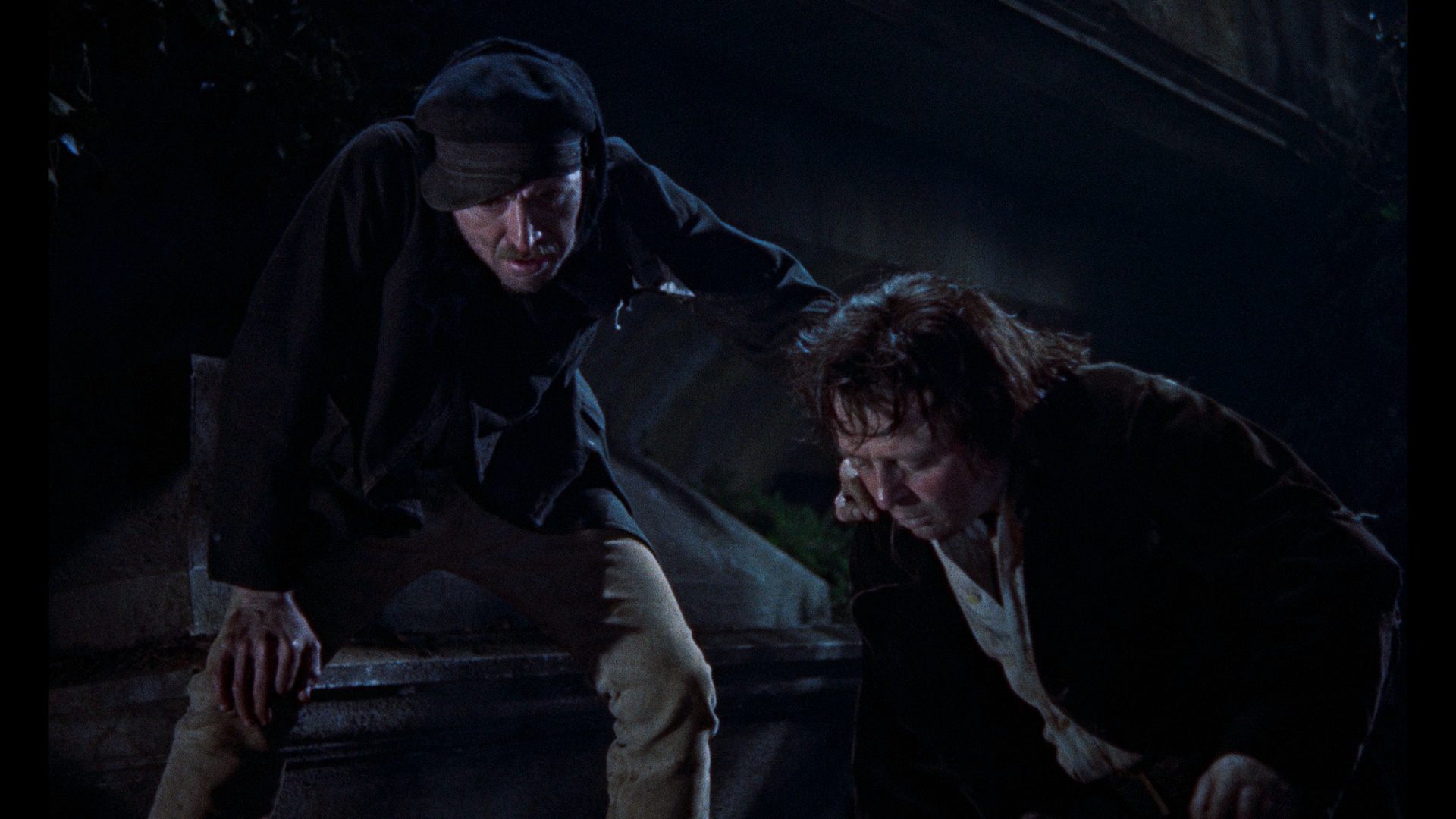 and notes on the actual production including the crew members who played a role in multiple productions around this time. Some interesting bits pop up about the
and notes on the actual production including the crew members who played a role in multiple productions around this time. Some interesting bits pop up about the 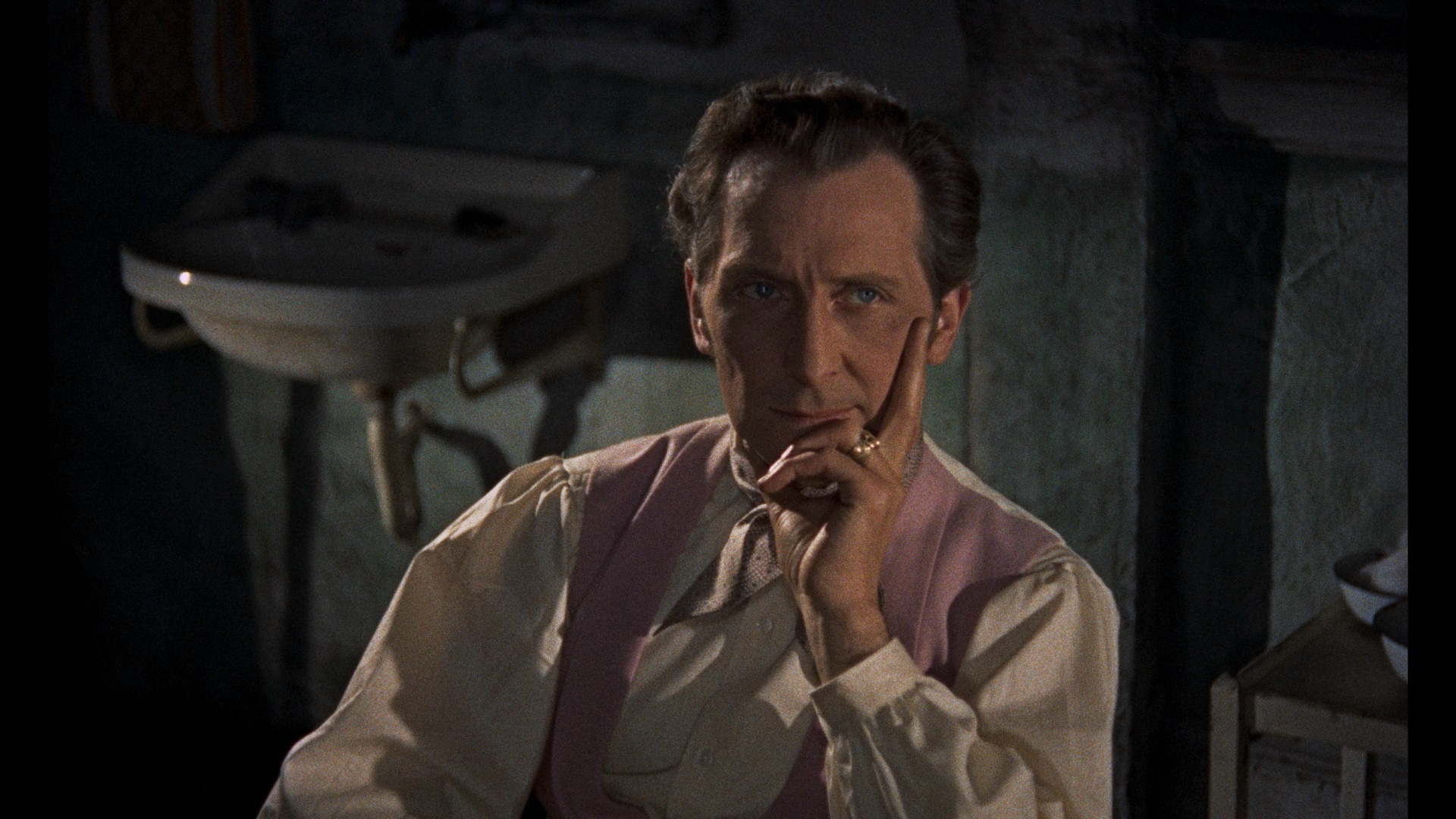 differences in Jimmy Sangster's original script, and everyone seems thrilled at the parade of character actors on display. You even get to find out how they shot that striking trailer with Cushing addressing the audience, which is included as an extra here as well. A good overview of the film's history can also be found in the new featurette, "Back from the Dead: Inside The Revenge of Frankenstein" (21m21s), with Rigby, Alan Barnes, and Kevin Lyons and Jonathan Rigby placing it in context within the state of Hammer at the time and the reason they ended up doing a sequel for a different studio than the first film. The welcome "Hammer's Women" series continues here with a look at Eunice Gayson (7m58s) by film historian Pamela Hutchinson, whose enthusiastic appraisal of the actress is a very informative snapshot of her long life and body of work. Then Kat Ellinger handles insights with Dima Ballin's "A Frankenstein for the 20th Century" (26m37s) to delve into the Hammer portrayal of the title character as a modern reinvention of Shelley's protagonist who reflected the concerns of an increasingly anarchistic era including its social attitudes on progress and science. David Huckvale, author of Hammer Film Scores and the Musical Avant-Garde, keeps the ongoing looks at Hammer scores alive here with "Arpeggios of Melancholy (12m57s) to look at the work of composer Leonard Salzedo’s score and its more melancholic approach here than the more famous contributions of James Bernard. A great, rare outtakes reel (11m43s) is a silent collection of slates, actors breaking character, and other little tidbits that fans will enjoy, while the silent, B&W Super 8 version (8m17s) offers a speedy and rather chaotic condensation of the story for home audiences at the time. Finally the disc closes out with Joe Dante hosting the Trailers from Hell version of the trailer and an image gallery of 108 stills and promotional items. The disc also comes packaged with a booklet featuring a Hearn essay, Kieran Foster on Hammer’s aborted Tales of Frankenstein TV series, a Sangster essay about the film, promotional materials, sample critical
differences in Jimmy Sangster's original script, and everyone seems thrilled at the parade of character actors on display. You even get to find out how they shot that striking trailer with Cushing addressing the audience, which is included as an extra here as well. A good overview of the film's history can also be found in the new featurette, "Back from the Dead: Inside The Revenge of Frankenstein" (21m21s), with Rigby, Alan Barnes, and Kevin Lyons and Jonathan Rigby placing it in context within the state of Hammer at the time and the reason they ended up doing a sequel for a different studio than the first film. The welcome "Hammer's Women" series continues here with a look at Eunice Gayson (7m58s) by film historian Pamela Hutchinson, whose enthusiastic appraisal of the actress is a very informative snapshot of her long life and body of work. Then Kat Ellinger handles insights with Dima Ballin's "A Frankenstein for the 20th Century" (26m37s) to delve into the Hammer portrayal of the title character as a modern reinvention of Shelley's protagonist who reflected the concerns of an increasingly anarchistic era including its social attitudes on progress and science. David Huckvale, author of Hammer Film Scores and the Musical Avant-Garde, keeps the ongoing looks at Hammer scores alive here with "Arpeggios of Melancholy (12m57s) to look at the work of composer Leonard Salzedo’s score and its more melancholic approach here than the more famous contributions of James Bernard. A great, rare outtakes reel (11m43s) is a silent collection of slates, actors breaking character, and other little tidbits that fans will enjoy, while the silent, B&W Super 8 version (8m17s) offers a speedy and rather chaotic condensation of the story for home audiences at the time. Finally the disc closes out with Joe Dante hosting the Trailers from Hell version of the trailer and an image gallery of 108 stills and promotional items. The disc also comes packaged with a booklet featuring a Hearn essay, Kieran Foster on Hammer’s aborted Tales of Frankenstein TV series, a Sangster essay about the film, promotional materials, sample critical 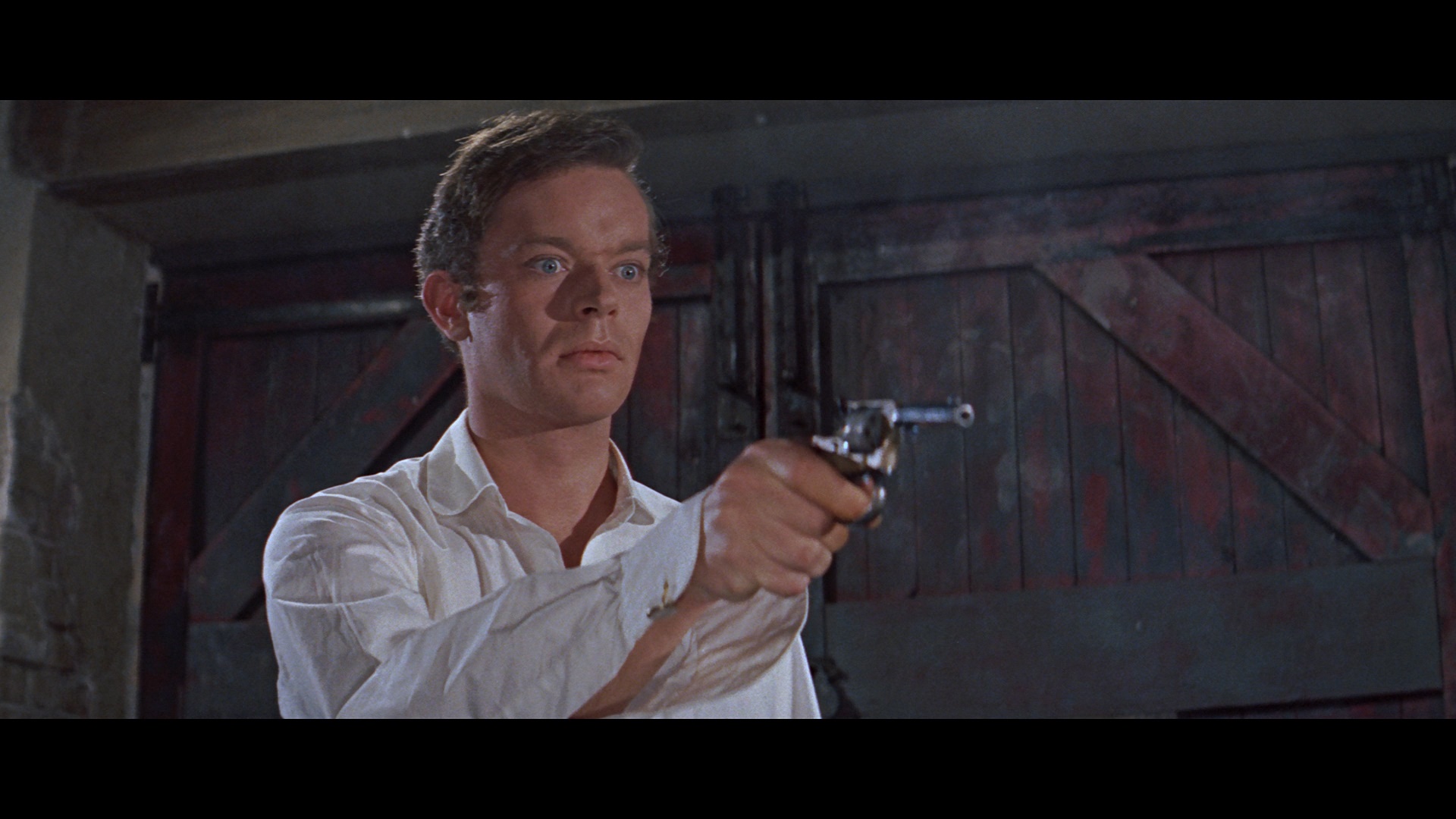 reactions, and film credits.
reactions, and film credits.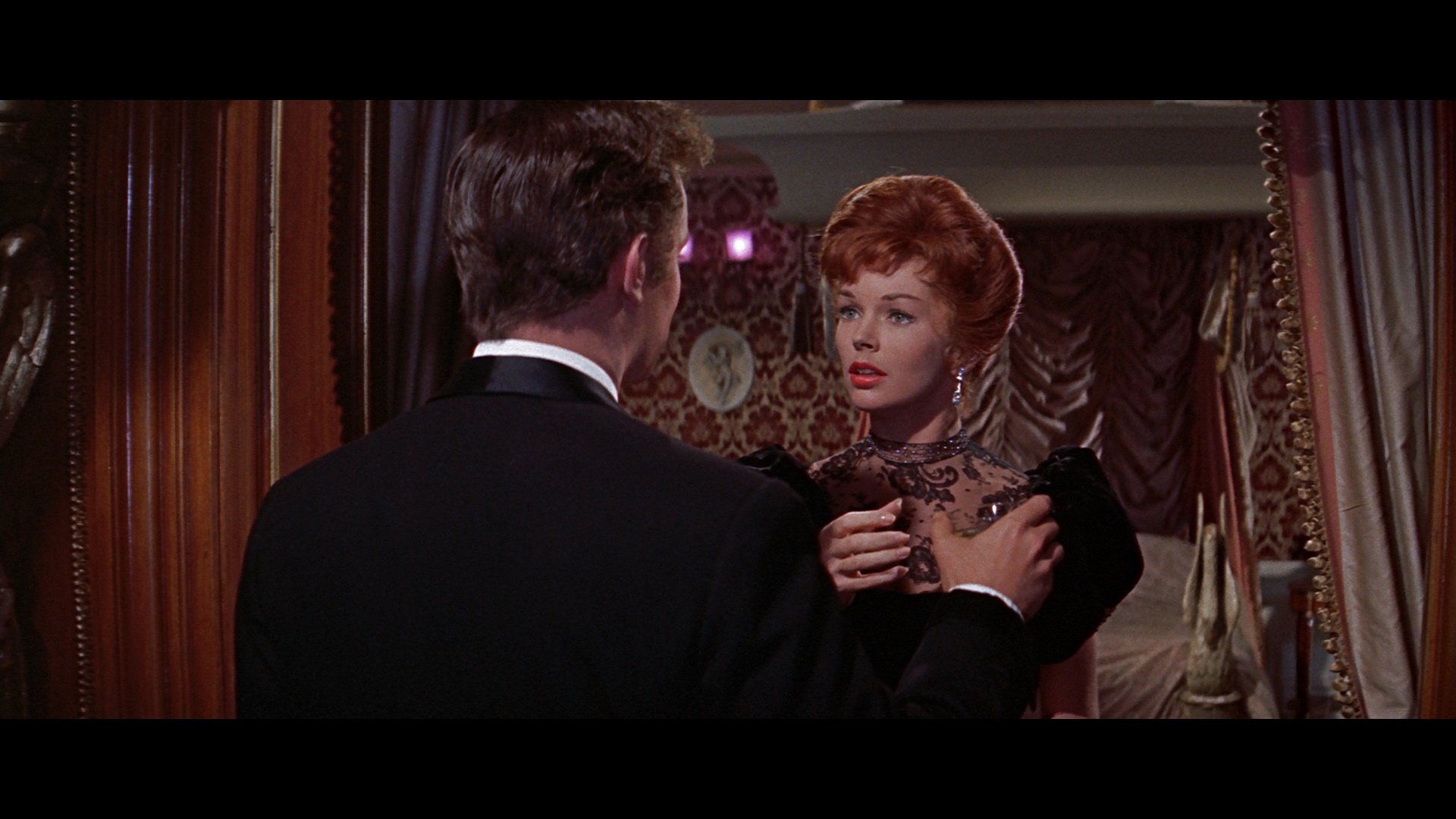 get another dose of Terence Fisher with his very unorthodox take on Robert Louis Stevenson with The Two Faces of Dr. Jekyll, which downplays the physical horror more than ever before in favor of an atmosphere of debauchery that led to major censor cuts upon its original release (including a very watered-down U.S. version as House of Fright). In its full-strength form first restored in 2010 for Sony's DVD edition, this is a remarkably potent and melancholy look at the duality of human nature with Paul Massie (from Basil Dearden's Sapphire) as a very subdued Dr. Henry Jekyll, complete with a wildly unconvincing fake beard and eyebrows. Where the two most famous prior versions of the story with Fredric March and Spencer Tracy physicalized the transformation into Hyde by making him either outright monstrous or just brutish, here he becomes clean shaven and icy cold in demeanor, a decision that threw many audience members at the time (and preceded the approach taken by Jerry Lewis in The Nutty Professor, oddly enough). Rather than simply splitting our main character's attentions between two women from opposite sides of the tracks, here we have a fascinating triangle involving Jekyll (who develops a serum that turns him into the murderous Hyde), his wife Kitty (Addams), and their decadent friend Paul (Lee), who spends time in dens of iniquity and relies on the Jekylls to bail him out financially. Another woman does come into the picture thanks to exotic snake dancer Maria (Marla), but the real dramatic focuses here is on Paul's new, dangerous friendship with Hyde as it leads to a very different,
get another dose of Terence Fisher with his very unorthodox take on Robert Louis Stevenson with The Two Faces of Dr. Jekyll, which downplays the physical horror more than ever before in favor of an atmosphere of debauchery that led to major censor cuts upon its original release (including a very watered-down U.S. version as House of Fright). In its full-strength form first restored in 2010 for Sony's DVD edition, this is a remarkably potent and melancholy look at the duality of human nature with Paul Massie (from Basil Dearden's Sapphire) as a very subdued Dr. Henry Jekyll, complete with a wildly unconvincing fake beard and eyebrows. Where the two most famous prior versions of the story with Fredric March and Spencer Tracy physicalized the transformation into Hyde by making him either outright monstrous or just brutish, here he becomes clean shaven and icy cold in demeanor, a decision that threw many audience members at the time (and preceded the approach taken by Jerry Lewis in The Nutty Professor, oddly enough). Rather than simply splitting our main character's attentions between two women from opposite sides of the tracks, here we have a fascinating triangle involving Jekyll (who develops a serum that turns him into the murderous Hyde), his wife Kitty (Addams), and their decadent friend Paul (Lee), who spends time in dens of iniquity and relies on the Jekylls to bail him out financially. Another woman does come into the picture thanks to exotic snake dancer Maria (Marla), but the real dramatic focuses here is on Paul's new, dangerous friendship with Hyde as it leads to a very different, 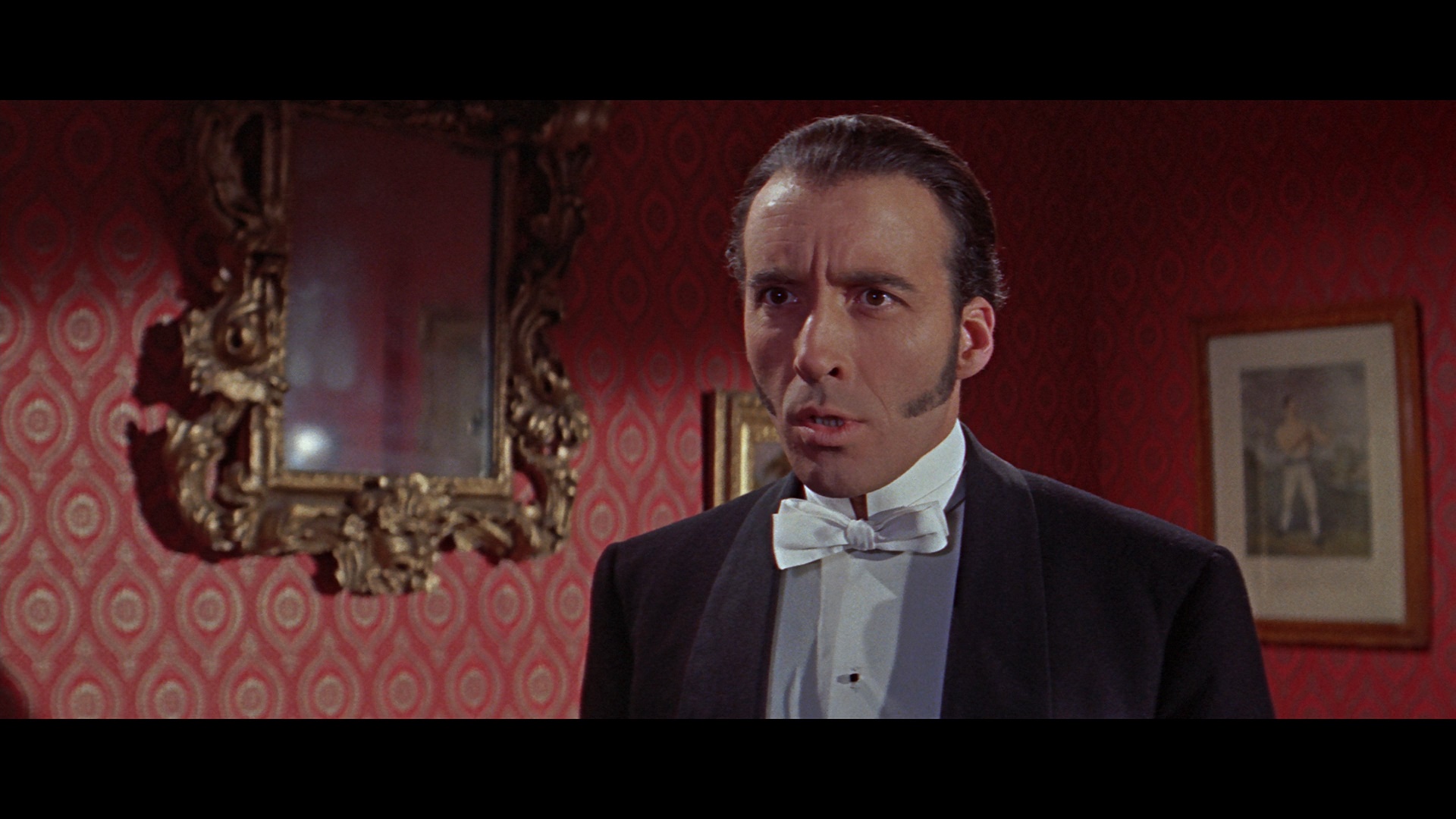 more thoughtful kind of resolution than you might expect.
more thoughtful kind of resolution than you might expect. 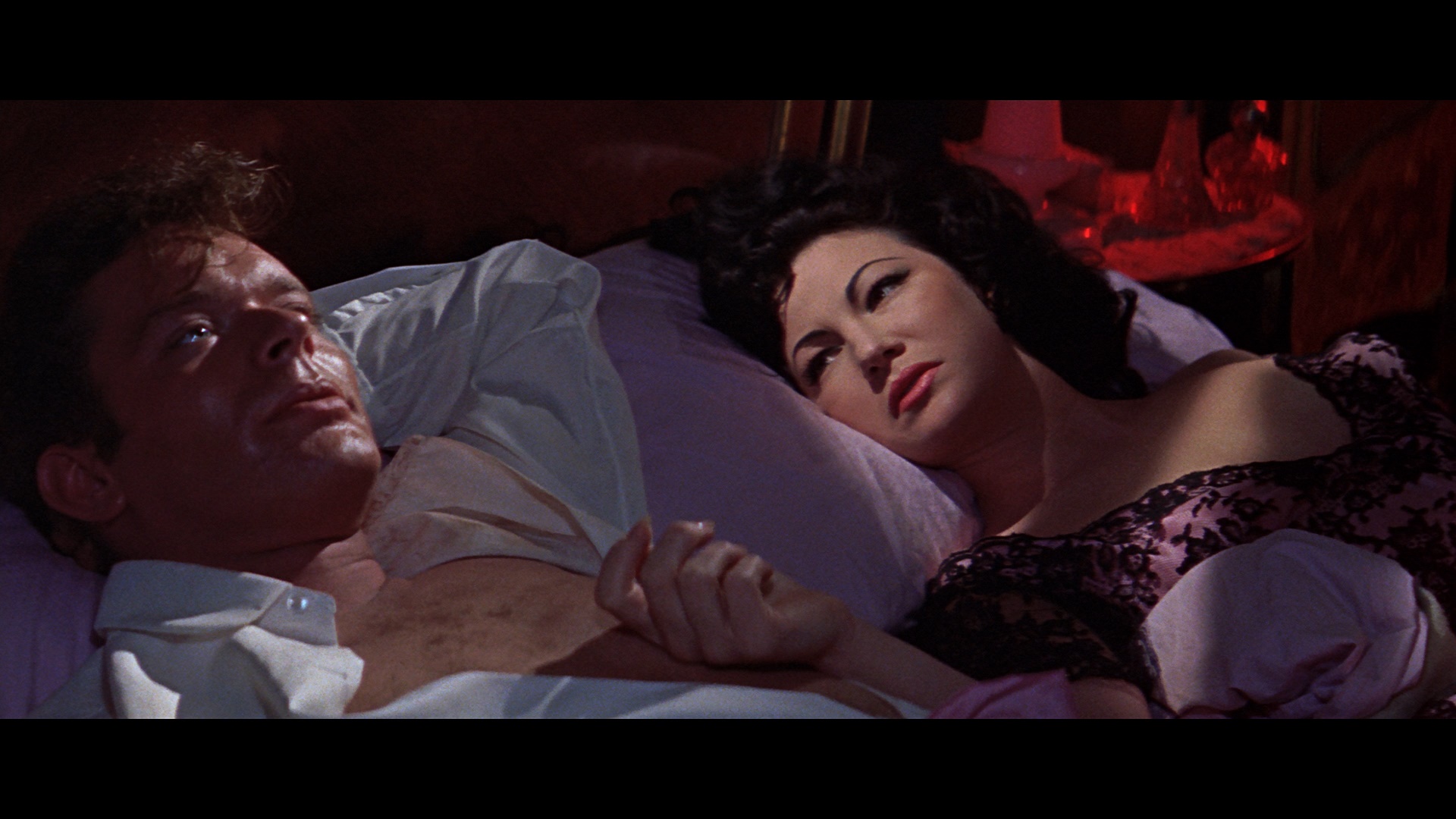
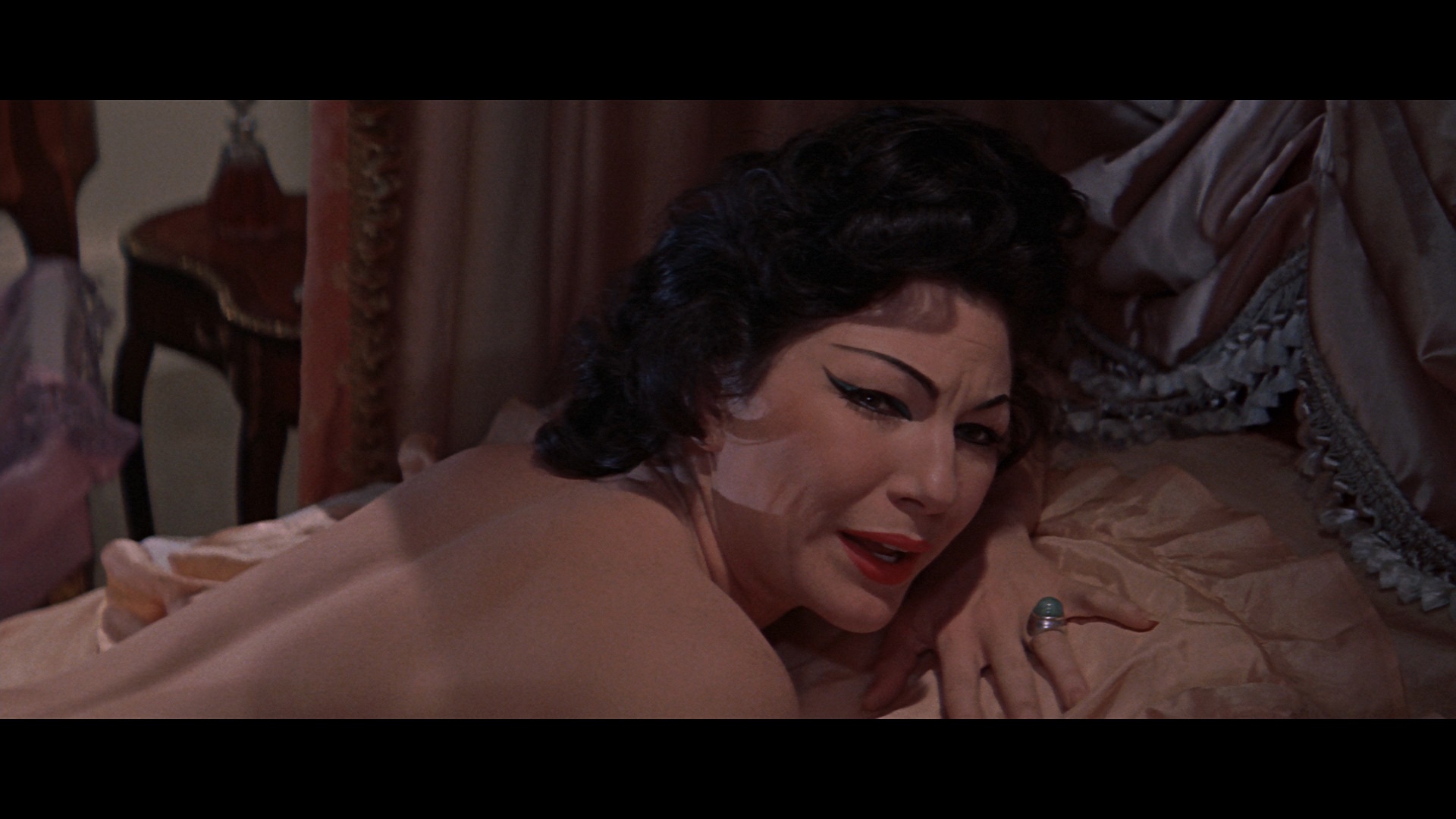 usual Hammer
usual Hammer 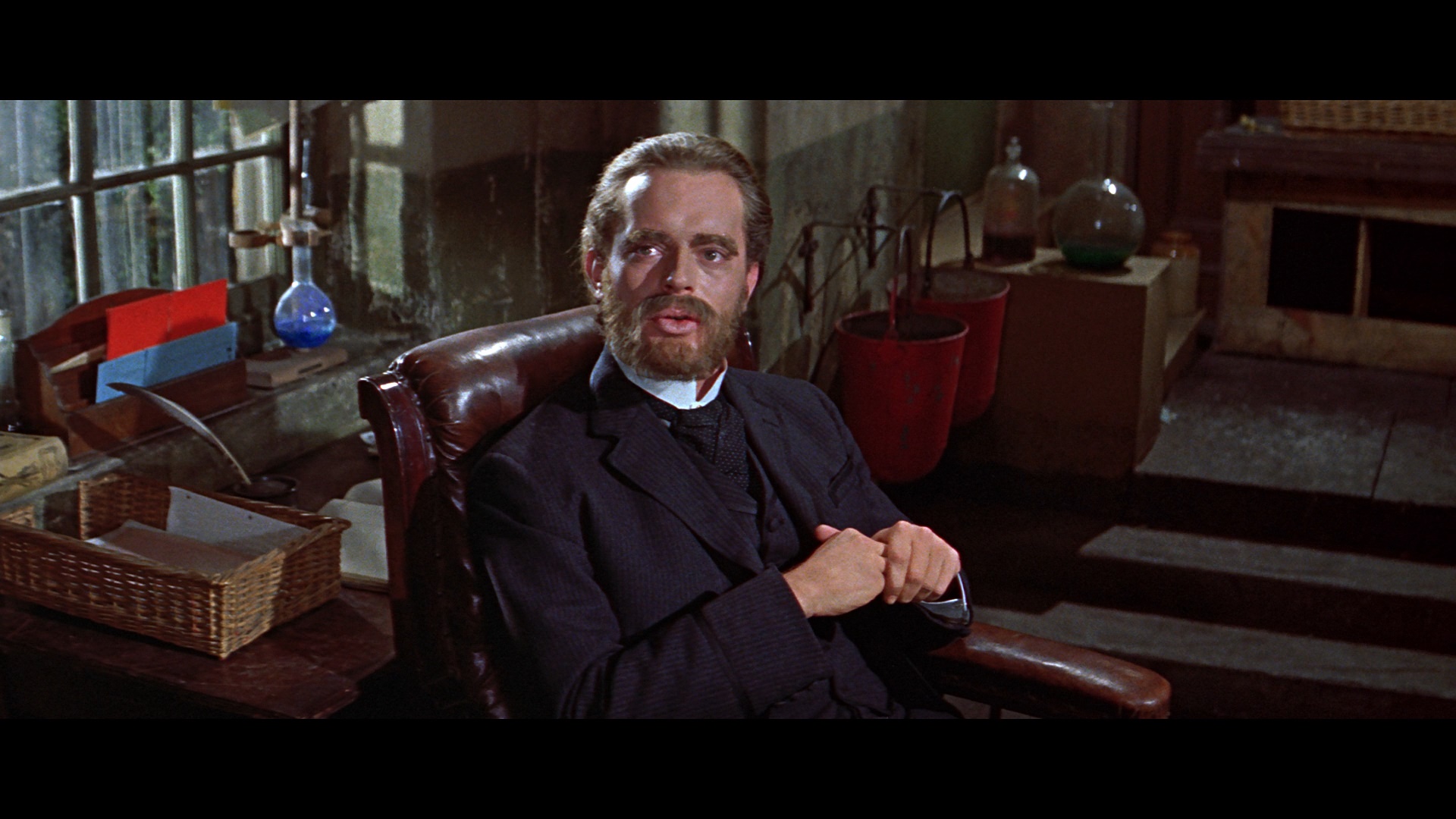 approach at the time right from the main titles, the production design and costumes reflect the themes inherent in the story, the idea of making a more handsome Jekyll originated with Michael Carreras, and the actors reflect a conjunction of talent that sometimes falls way outside of the studio's usual stable. The featurette "Identity Crisis: Inside The Two Faces of Dr. Jekyll" (18m48s) brings together Barnes, Lyons and Rigby again to note Hammer's prior connection to Jekyll, the role of Carreras in the development process, the quick appearance by a young Oliver Reed, and the outrageous symbolism of the notorious snake dance sequence. Then it's more "Hammer's Women" time with a look at Addams (10m13s) by Laura Mayne, whose excellent track record with these continues here with a swift and enjoyable guide to the actress' path to this film after a tenure at MGM and a role in one of Otto Preminger's most notorious films. An archival audio interview with Massie (9m32s) from 1967 with Hammer fan Robert Blenheim is a scratchy but very worthwhile chat with the actor who talks about the tight-knit conditions of the 11-week shoot and his own history with acting from adolescence onward starting in Canada. Then a 1968 interview with screenwriter Wolf Mankowitz (31m36s) by Bernard Braden for the proposed series Now and Then features the chain-smoking writer chatting about the challenges of being a Jewish intellectual, the current state of Israel, and the impact his heritage has on his work and private life. "Mauve Decadence" (10m23s) is another great Huckvale film score dissection, this time looking at the work of Monty Norman who of course went on to fame (and controversy) for the "James Bond Theme" and studded this film with some highly unusual choices. "The Many Faces of Dr. Jekyll" (6m50s) is a handy overview of the many changes wrought on the film by U.K. and U.S. censors, with the latter represented by some particularly goofy redubbing (lots of "Hades" and "witches"). The theatrical trailer is also included in its original form or a Trailers from Hell option featuring Sam Hamm, plus an image gallery of promotional stills and marketing material as well as a booklet featuring new liner notes by Ellinger, reviews, and promotional artwork.
approach at the time right from the main titles, the production design and costumes reflect the themes inherent in the story, the idea of making a more handsome Jekyll originated with Michael Carreras, and the actors reflect a conjunction of talent that sometimes falls way outside of the studio's usual stable. The featurette "Identity Crisis: Inside The Two Faces of Dr. Jekyll" (18m48s) brings together Barnes, Lyons and Rigby again to note Hammer's prior connection to Jekyll, the role of Carreras in the development process, the quick appearance by a young Oliver Reed, and the outrageous symbolism of the notorious snake dance sequence. Then it's more "Hammer's Women" time with a look at Addams (10m13s) by Laura Mayne, whose excellent track record with these continues here with a swift and enjoyable guide to the actress' path to this film after a tenure at MGM and a role in one of Otto Preminger's most notorious films. An archival audio interview with Massie (9m32s) from 1967 with Hammer fan Robert Blenheim is a scratchy but very worthwhile chat with the actor who talks about the tight-knit conditions of the 11-week shoot and his own history with acting from adolescence onward starting in Canada. Then a 1968 interview with screenwriter Wolf Mankowitz (31m36s) by Bernard Braden for the proposed series Now and Then features the chain-smoking writer chatting about the challenges of being a Jewish intellectual, the current state of Israel, and the impact his heritage has on his work and private life. "Mauve Decadence" (10m23s) is another great Huckvale film score dissection, this time looking at the work of Monty Norman who of course went on to fame (and controversy) for the "James Bond Theme" and studded this film with some highly unusual choices. "The Many Faces of Dr. Jekyll" (6m50s) is a handy overview of the many changes wrought on the film by U.K. and U.S. censors, with the latter represented by some particularly goofy redubbing (lots of "Hades" and "witches"). The theatrical trailer is also included in its original form or a Trailers from Hell option featuring Sam Hamm, plus an image gallery of promotional stills and marketing material as well as a booklet featuring new liner notes by Ellinger, reviews, and promotional artwork.
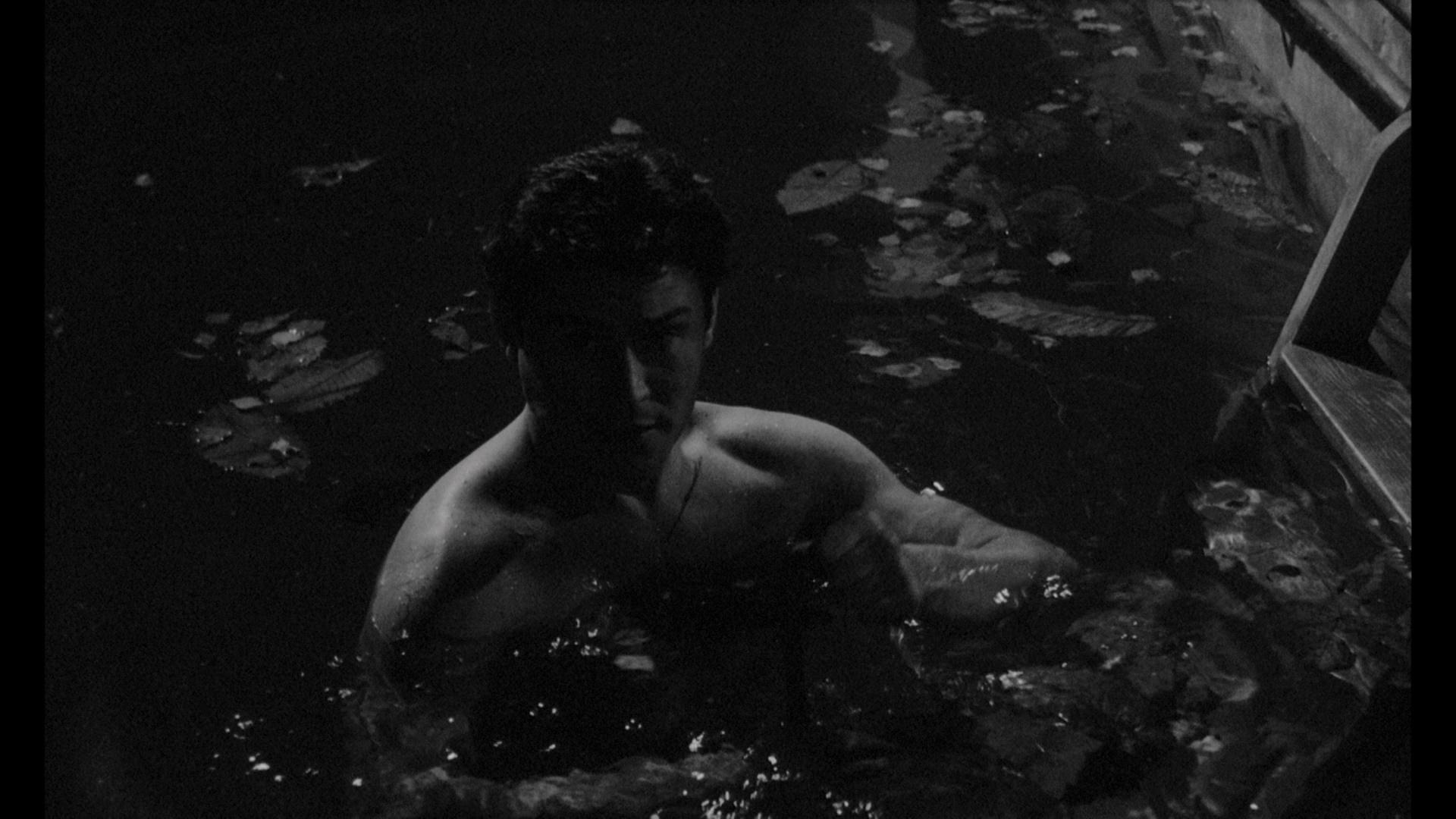 The first
The first 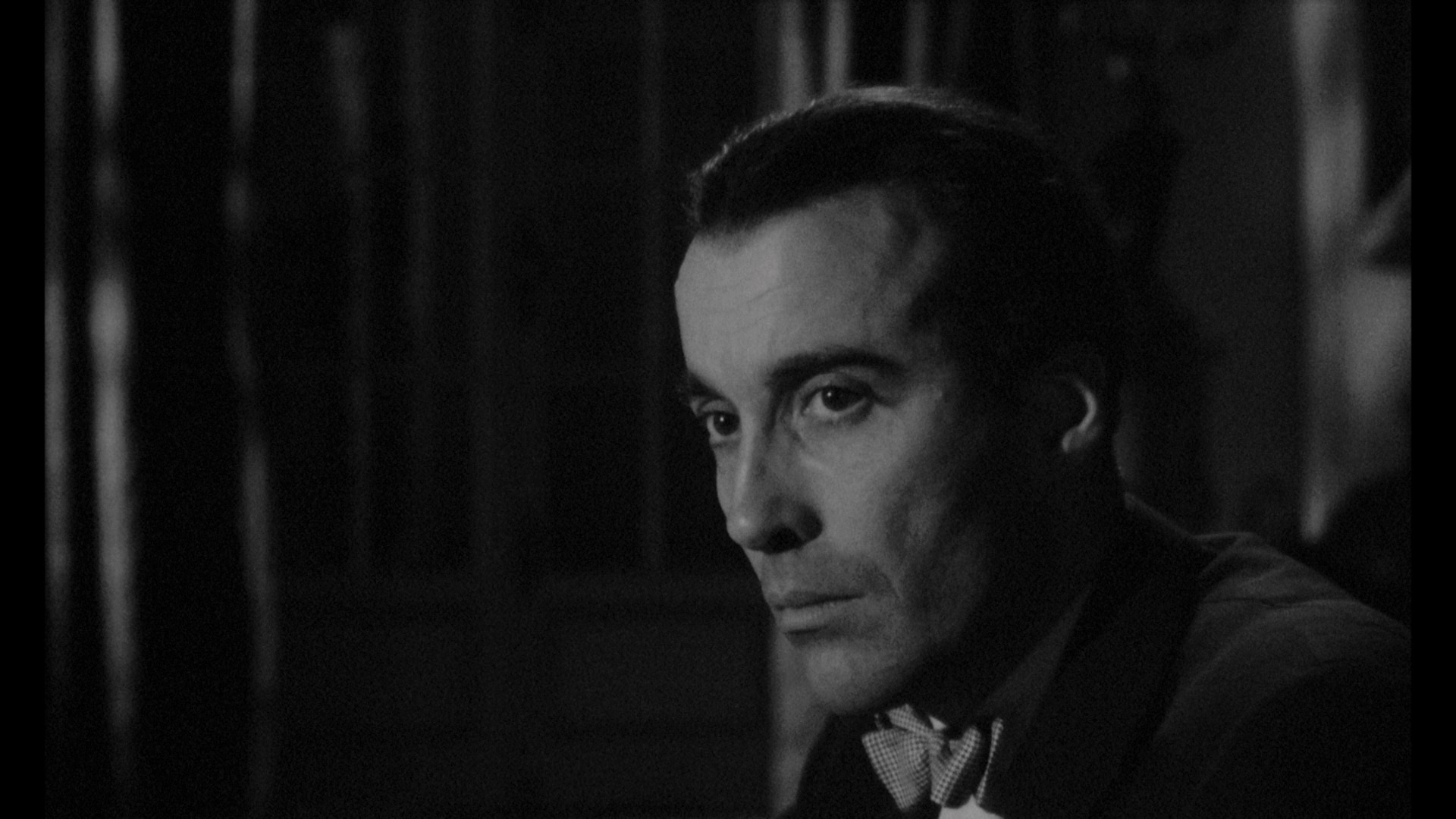 and finest of Hammer Films' psychological chillers cranked out in the wake of Alfred Hitchcock's Psycho, the stylish and devilishly clever Taste of Fear (known as Scream of Fear in the U.S.) actually has little to do with Alfred Hitchcock's often-imitated gimmicky shocker apart from the fact that they're both in black-and-white and feature excellent, whiplash twist endings. This marked the first of three Hammer films for director Seth Holt, followed by The Nanny and Blood from the Mummy's Tomb; though hardly prolific, he certainly left his stamp and, with this title, turned out one of the studio's strongest films from its golden era.
and finest of Hammer Films' psychological chillers cranked out in the wake of Alfred Hitchcock's Psycho, the stylish and devilishly clever Taste of Fear (known as Scream of Fear in the U.S.) actually has little to do with Alfred Hitchcock's often-imitated gimmicky shocker apart from the fact that they're both in black-and-white and feature excellent, whiplash twist endings. This marked the first of three Hammer films for director Seth Holt, followed by The Nanny and Blood from the Mummy's Tomb; though hardly prolific, he certainly left his stamp and, with this title, turned out one of the studio's strongest films from its golden era.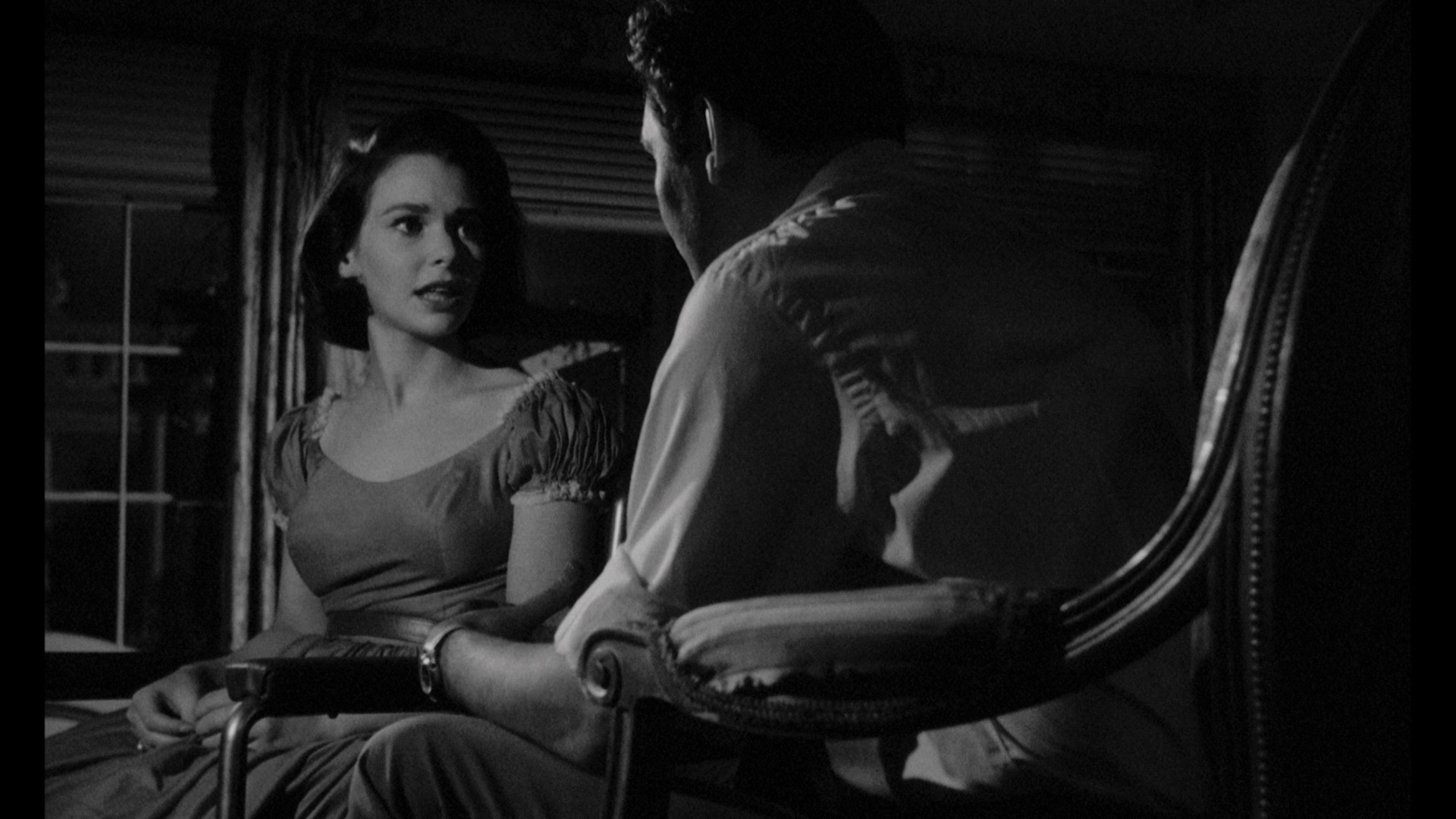 family physician, Dr. Gerrard (Lee), who inquires further about the state of Penny's paralysis. The mystery deepens when Penny's father calls that afternoon to tell her he'll be home soon, but Penny's convinced that something diabolical is afoot...
family physician, Dr. Gerrard (Lee), who inquires further about the state of Penny's paralysis. The mystery deepens when Penny's father calls that afternoon to tell her he'll be home soon, but Penny's convinced that something diabolical is afoot...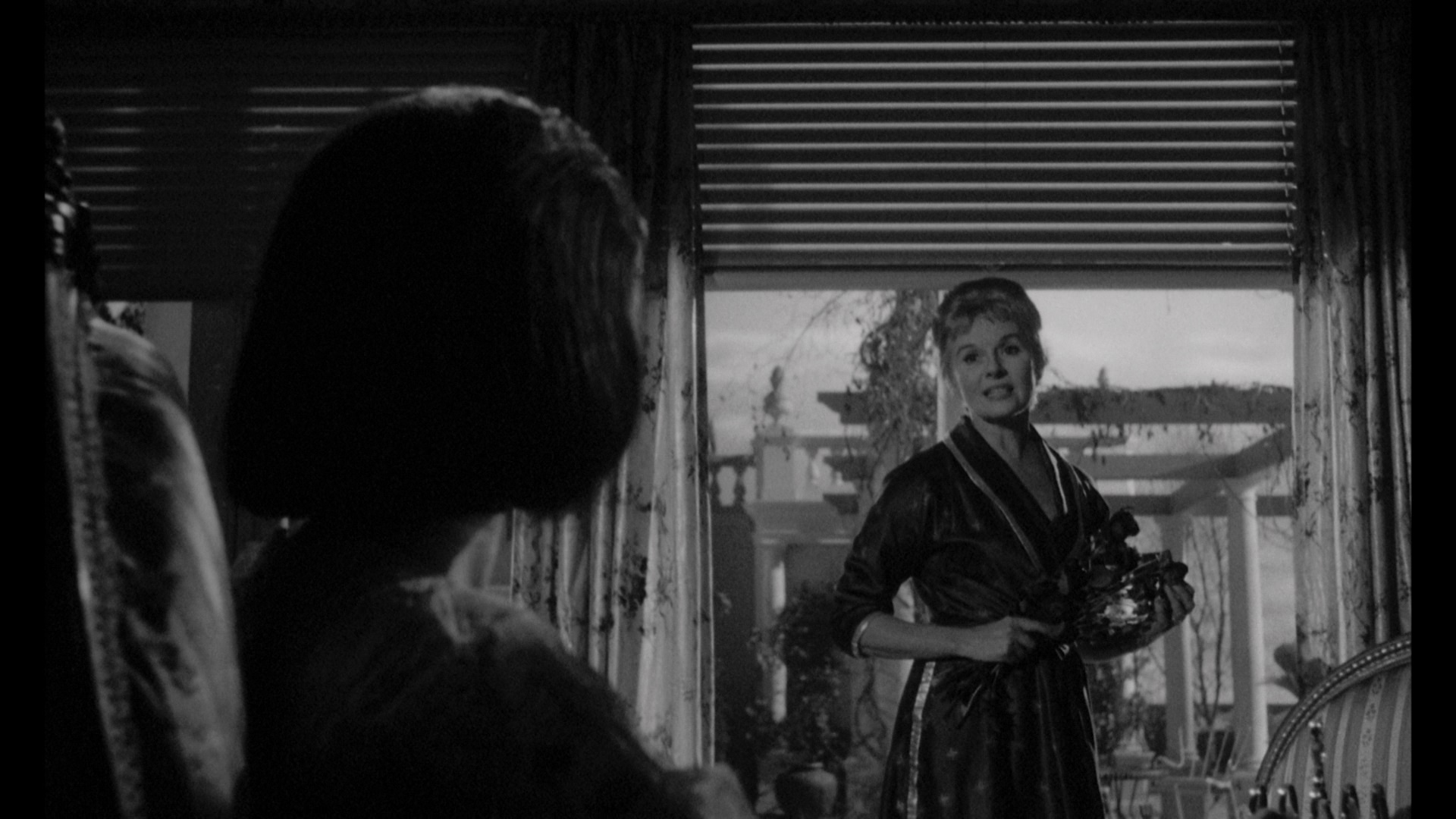 supreme Strasberg is excellent as Penny, while Todd and Lewis match her every step of the way in their ambiguous roles with motives that seem to shift back and forth a dozen times. Hammer vet Lee is given less to do and gets saddled with a French accent, but he gets a deliciously downplayed moment in the closing moments that makes it all worth it. In short, this one's a real treat and worth revisiting multiple times to savor its expertly timed shots and wonderfully rich atmosphere.
supreme Strasberg is excellent as Penny, while Todd and Lewis match her every step of the way in their ambiguous roles with motives that seem to shift back and forth a dozen times. Hammer vet Lee is given less to do and gets saddled with a French accent, but he gets a deliciously downplayed moment in the closing moments that makes it all worth it. In short, this one's a real treat and worth revisiting multiple times to savor its expertly timed shots and wonderfully rich atmosphere.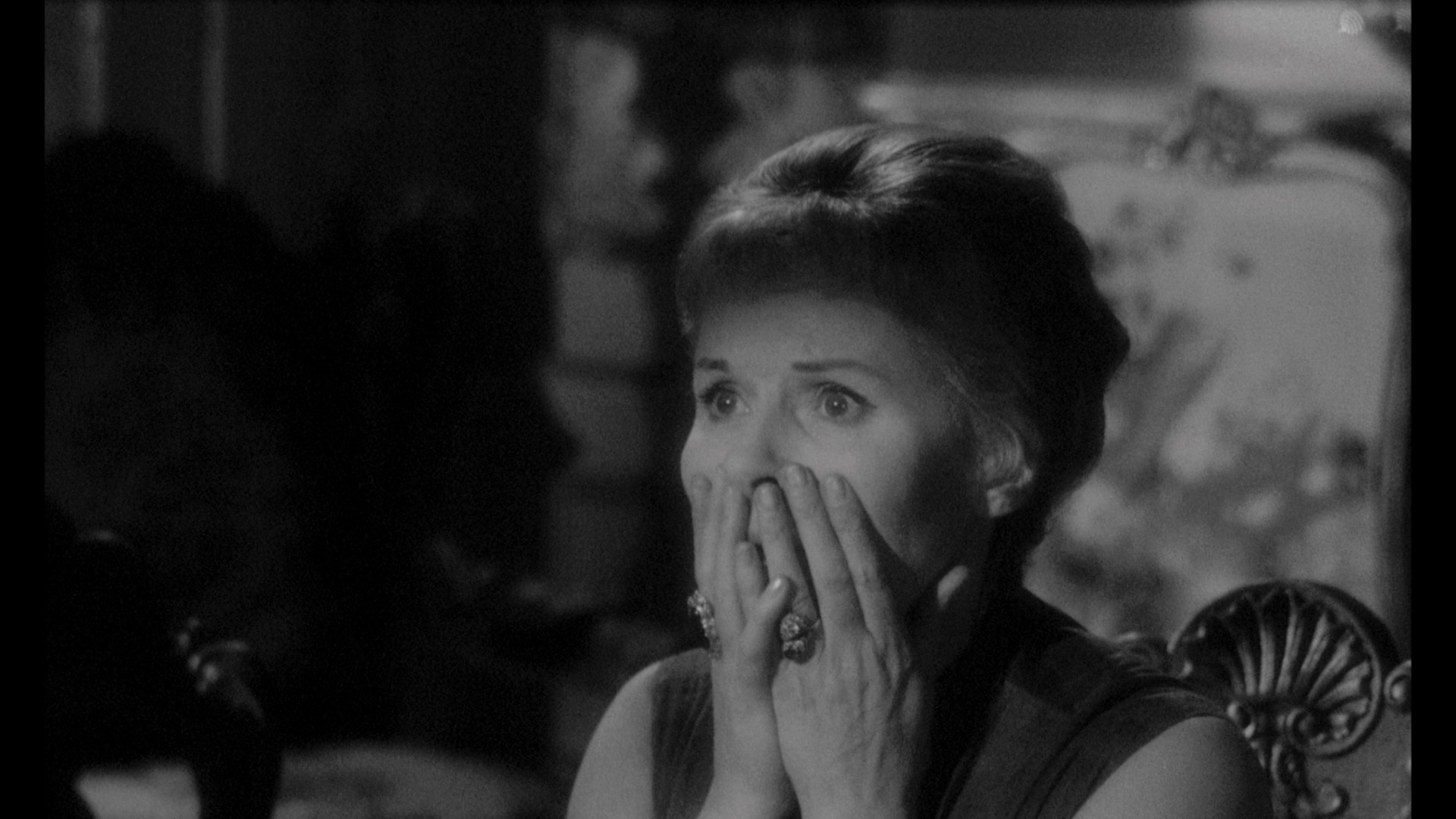 A vastly improved Blu-ray appeared from Mill Creek in 2018
A vastly improved Blu-ray appeared from Mill Creek in 2018  paired up with Never Take Candy from a Stranger, restoring the original framing and looking gorgeous throughout. As with Jekyll, the Indicator follows suit by using that same master and looking essentially identical, with the crystal clear English LPCM track (again with optional SDH subs) being top quality as well. The Indicator clearly pulls ahead by offering the first slate of extras for this film ever, starting with the option to watch it with either the U.K. or U.K. opening sequences (with the running times differing slightly due to the presence of the BBFC card). A new Lyons commentary is thankfully very appreciative of this film and comes loaded with research about Holt and the many technicians involved, as well as notes about the production process including the presence of Strasberg as the token American star as part of the Columbia's involvement. "Body Horror: Inside Taste of Fear" (22m17s) is another insightful Rigby-Lyons-Barnes featurette tracing this film back to X the Unknown and putting it in context with the growing wave of mainstream thrillers at the time including Diabolique. They also talk quite about the teasing marketing campaign and its "no spoilers!" tactics. (Extra points for that "penny drops" pun, too.) This time "Hammer's Women" focuses on Ann Todd (11m35s) with Melanie Williams tackling the fascinating character actor and her work for the screen and stage starting in the '30s including her breakthrough with The Seventh Veil. Three archival interviews are also offered: a audio-only 2008 BFI appearance by screenwriter Jimmy Sangster with Marcus Hearn (67m40s), a video interview with Sangster (116m47s) with Rigby as part of the British Entertainment History Project, and part two of the BEHP 1988 audio interview with cinematographer Douglas Slocombe (over the full duration of the film), which picks up where the first one left off (included on Indicator's release of The Third Secret) with a discussion of his work for Hammer all the way to his legendary films with Steven Spielberg. All are chock full of info with the Sangster pieces serving as particularly rich treasure boxes for Hammer fans as he talks about the many, many classics he wrote for them. "Fear Makers" (8m37s) with camera operator Desmond Davis and assistant sound editor John Crome is focused primarily on Holt including his excellent memory for poetry, his heavy drinking habits, and his working habits, though you also get some juicy bits about problems with Strasberg's very overbearing mother on the set and the intuitive methods of "Dougie" Slocombe. Then it's Huckvale film score goodness again with "Anxiety and Terror" (24m51s) as he offers a perceptive appreciation of the evocative Clifton Parker score. And heed that opening spoiler disclaimer -- do not watch this before the movie. Unfortunately he keeps calling the main character "Peggy" through the whole piece, which is a little confusing. A Super 8 version of the film (19m55s) is a game attempt to condense the film's plot into 25% of the running time, and it sorts of works! Weirdly, it also features occasional narration by the same guy who dubbed Carl Parker in Radley Metzger's The Image. The rare U.S. trailer makes its first home video appearance with the main feature here, and it's nice to have even if it
paired up with Never Take Candy from a Stranger, restoring the original framing and looking gorgeous throughout. As with Jekyll, the Indicator follows suit by using that same master and looking essentially identical, with the crystal clear English LPCM track (again with optional SDH subs) being top quality as well. The Indicator clearly pulls ahead by offering the first slate of extras for this film ever, starting with the option to watch it with either the U.K. or U.K. opening sequences (with the running times differing slightly due to the presence of the BBFC card). A new Lyons commentary is thankfully very appreciative of this film and comes loaded with research about Holt and the many technicians involved, as well as notes about the production process including the presence of Strasberg as the token American star as part of the Columbia's involvement. "Body Horror: Inside Taste of Fear" (22m17s) is another insightful Rigby-Lyons-Barnes featurette tracing this film back to X the Unknown and putting it in context with the growing wave of mainstream thrillers at the time including Diabolique. They also talk quite about the teasing marketing campaign and its "no spoilers!" tactics. (Extra points for that "penny drops" pun, too.) This time "Hammer's Women" focuses on Ann Todd (11m35s) with Melanie Williams tackling the fascinating character actor and her work for the screen and stage starting in the '30s including her breakthrough with The Seventh Veil. Three archival interviews are also offered: a audio-only 2008 BFI appearance by screenwriter Jimmy Sangster with Marcus Hearn (67m40s), a video interview with Sangster (116m47s) with Rigby as part of the British Entertainment History Project, and part two of the BEHP 1988 audio interview with cinematographer Douglas Slocombe (over the full duration of the film), which picks up where the first one left off (included on Indicator's release of The Third Secret) with a discussion of his work for Hammer all the way to his legendary films with Steven Spielberg. All are chock full of info with the Sangster pieces serving as particularly rich treasure boxes for Hammer fans as he talks about the many, many classics he wrote for them. "Fear Makers" (8m37s) with camera operator Desmond Davis and assistant sound editor John Crome is focused primarily on Holt including his excellent memory for poetry, his heavy drinking habits, and his working habits, though you also get some juicy bits about problems with Strasberg's very overbearing mother on the set and the intuitive methods of "Dougie" Slocombe. Then it's Huckvale film score goodness again with "Anxiety and Terror" (24m51s) as he offers a perceptive appreciation of the evocative Clifton Parker score. And heed that opening spoiler disclaimer -- do not watch this before the movie. Unfortunately he keeps calling the main character "Peggy" through the whole piece, which is a little confusing. A Super 8 version of the film (19m55s) is a game attempt to condense the film's plot into 25% of the running time, and it sorts of works! Weirdly, it also features occasional narration by the same guy who dubbed Carl Parker in Radley Metzger's The Image. The rare U.S. trailer makes its first home video appearance with the main feature here, and it's nice to have even if it 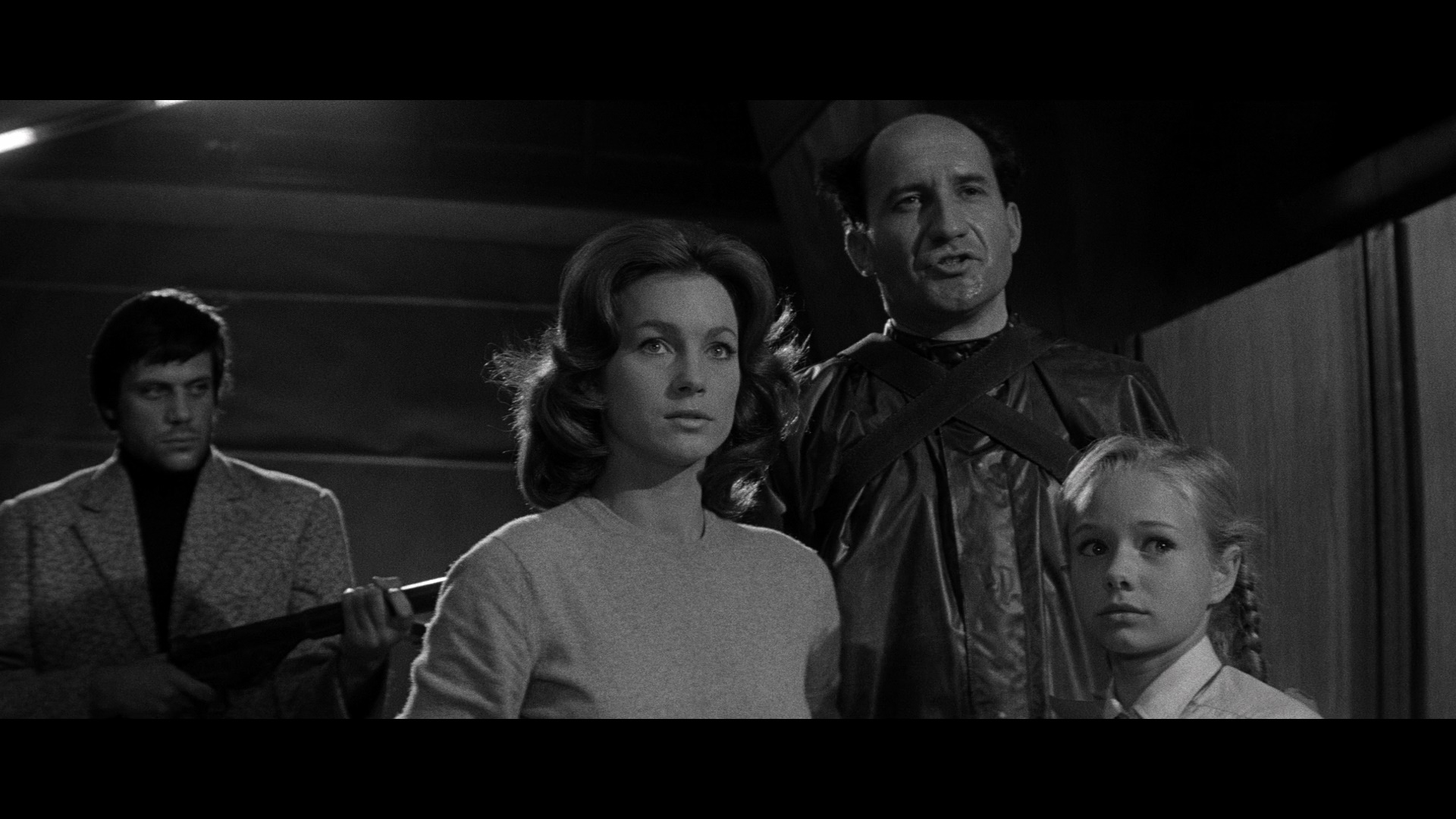 really doesn't do the film justice at all;
really doesn't do the film justice at all; 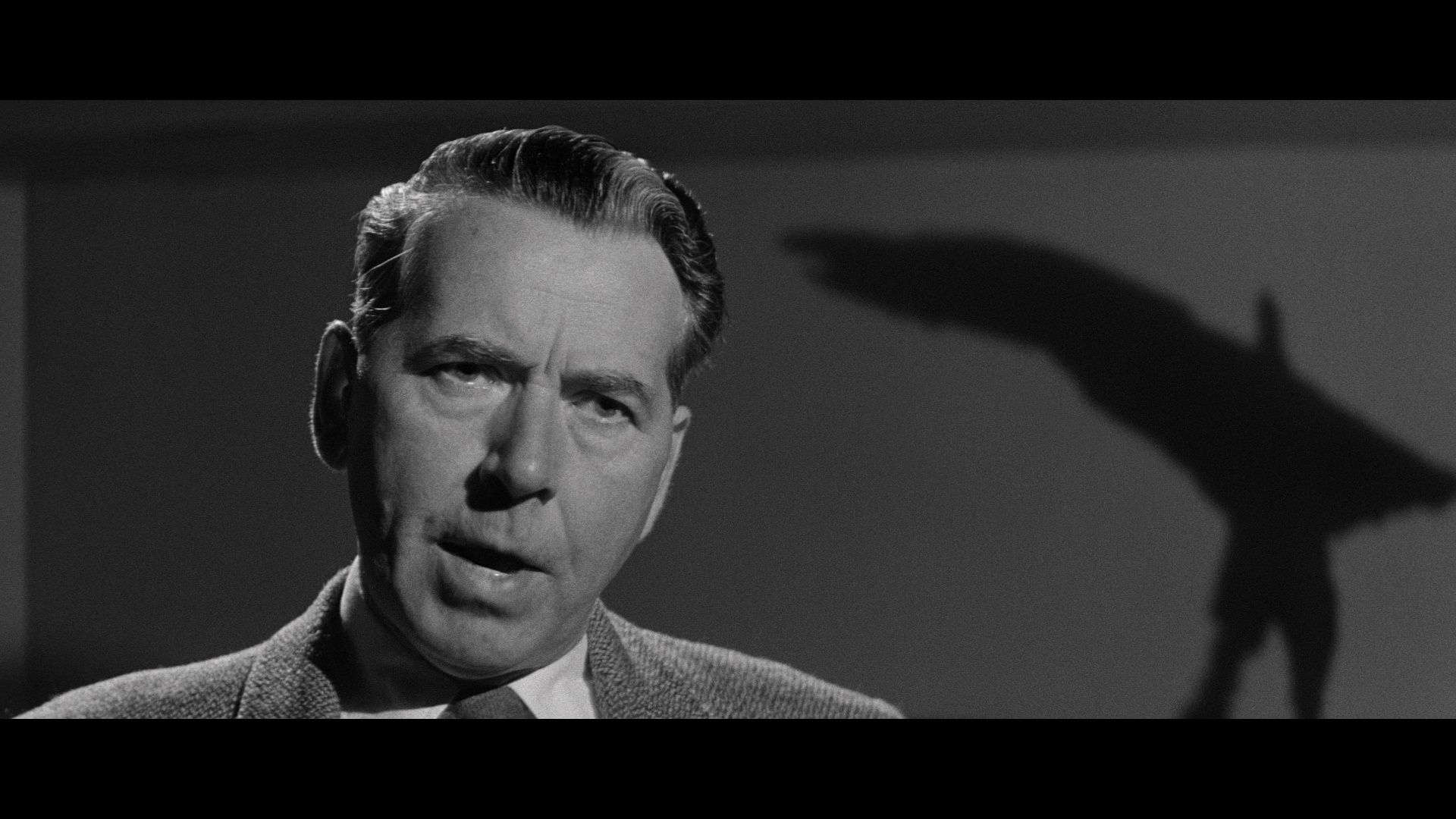 a Trailers from Hell version is also offered with commentary by Sam Hamm. Finally you get an image gallery of photos and promotional art as well as a booklet with Hearn liner notes, a Sangster essay, a press report from the set, promotional material, sample reviews, and film credits.
a Trailers from Hell version is also offered with commentary by Sam Hamm. Finally you get an image gallery of photos and promotional art as well as a booklet with Hearn liner notes, a Sangster essay, a press report from the set, promotional material, sample reviews, and film credits.  who starts off seeing what looks like a more violent variation on something like Beat Girl before things start zigging and zagging all over the place, and the cast seems to be giving their all with Losey at the helm. James Bond fans will also get a bit of a kick out of seeing two future familiar faces, Walter Gotell and James Villiers, teaming up here as the establishment, and Reed fans will really get their fill here
who starts off seeing what looks like a more violent variation on something like Beat Girl before things start zigging and zagging all over the place, and the cast seems to be giving their all with Losey at the helm. James Bond fans will also get a bit of a kick out of seeing two future familiar faces, Walter Gotell and James Villiers, teaming up here as the establishment, and Reed fans will really get their fill here as he gets some of the most striking close ups of his career just before he got his face sliced up in a bar fight.
as he gets some of the most striking close ups of his career just before he got his face sliced up in a bar fight. 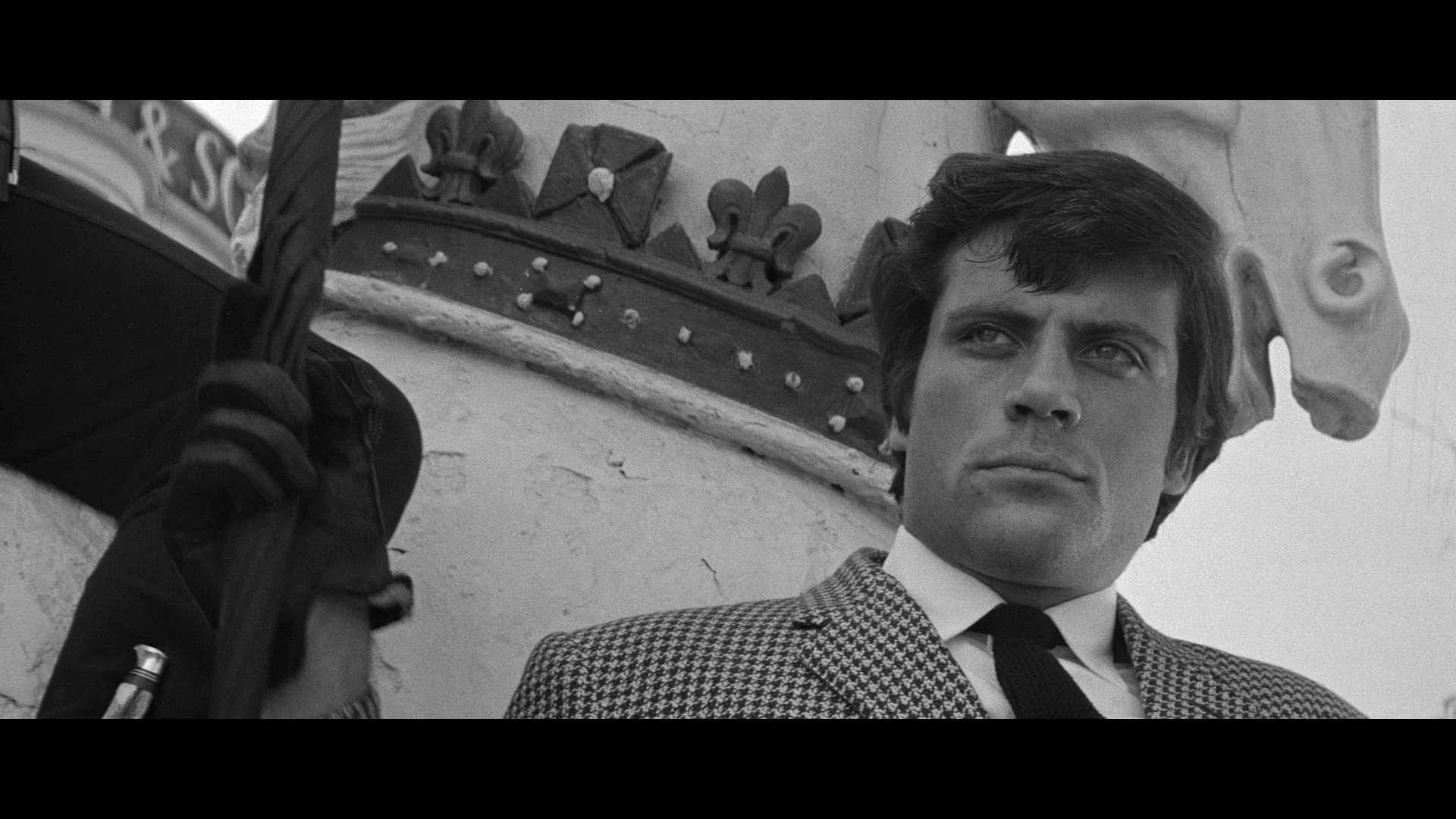 from Lindsay Hallam, and since she might be the single most idiosyncratic actress ever aligned with Hammer, it's a colorful account of how she started off in Hollywood but didn't quite mesh with that mentality and ventured off in her own distinct direction. The comments about this film are especially insightful as Lindfors became the personification of her director's own sociological views with a character invented from whole cloth for this film. In "Looking in the Right Place" (10m5s), Field reflects on Losey, Reed (whose trademark facial cut happened during this film),
from Lindsay Hallam, and since she might be the single most idiosyncratic actress ever aligned with Hammer, it's a colorful account of how she started off in Hollywood but didn't quite mesh with that mentality and ventured off in her own distinct direction. The comments about this film are especially insightful as Lindfors became the personification of her director's own sociological views with a character invented from whole cloth for this film. In "Looking in the Right Place" (10m5s), Field reflects on Losey, Reed (whose trademark facial cut happened during this film), 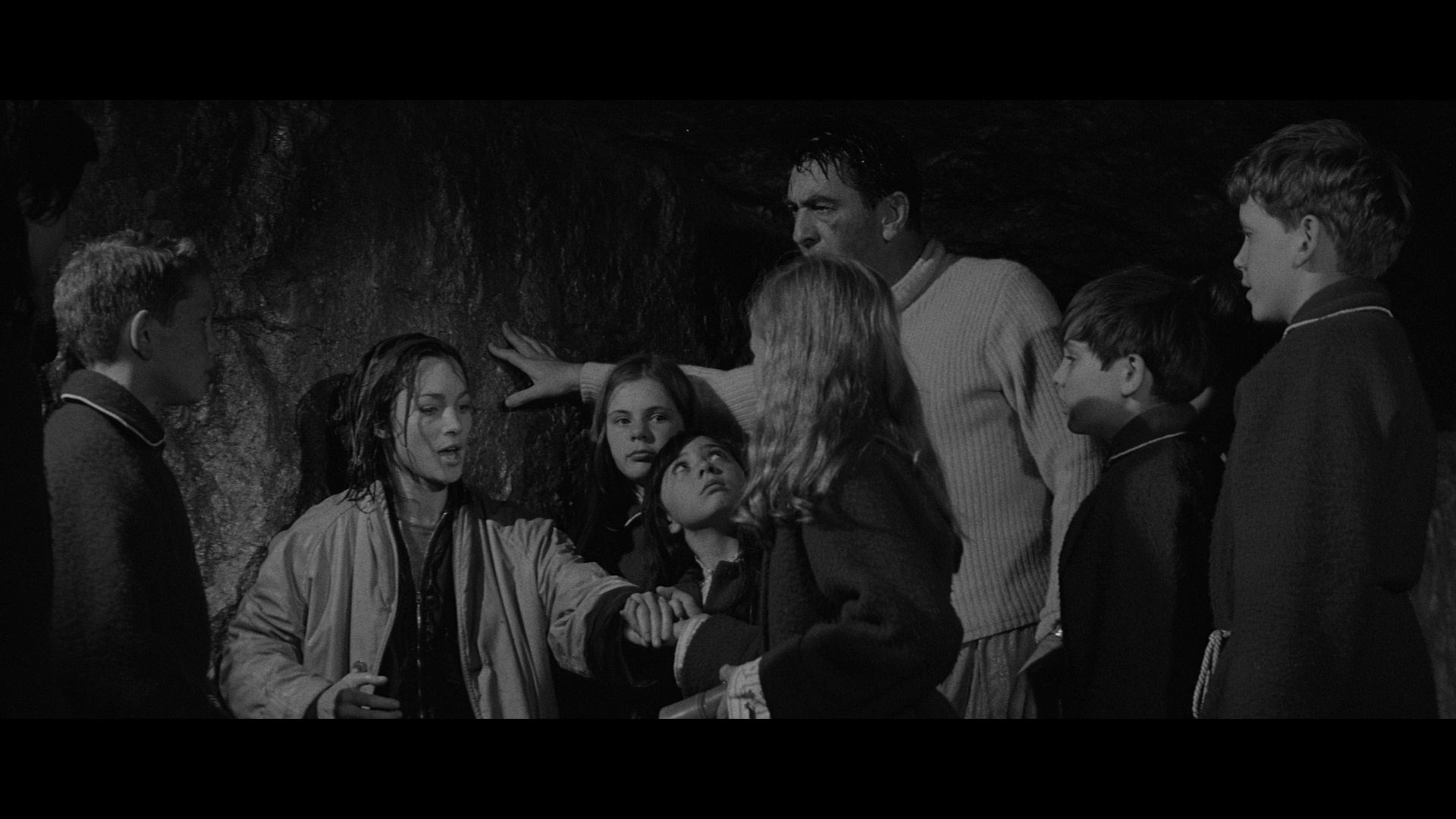 and Carey, as well as her confidence in rock climbing compared to her peers, the striking sculptures by Elisabeth Frink, and the "almost incestuous" nature of her character. Then "Children of the Damned" (23m16s) features three of the child actors -- David Palmer, Kit Williams and Christopher Witty -- recalling being frightened of Losey, insisting that boys don't scream, shooting at a real naval base, and finding out the hard way about Reed's driving experience. In "Something Out of Nothing" (6m36s), screenwriter Evan Jones reveals how his first writing credit came about through Losey's dissatisfaction with the shooting script and a need to crank out a new one in a single week. He also shows off one of Frink's sculptures in his home, too. Camera operator Anthony Heller appears in "Smoke Screen" (11m22s) with impressionistic thoughts about the sights that made an impression on him during the one-month production and the nature of Losey's perfectionism, after which we jump to a trio of critical appreciations starting with Gavrik Losey (son of Joseph) in "Beneath the Surface" (25m37s) who has a long, hair-raising story about a pivotal car gag in the film. Then "Beyond Black Leather" (14m20s) has I Q Hunter exploring what he terms the closest thing to a Hammer art film and its fascinating relationship to other British sci-fi films preceding it and other "aimless" films like La Dolce Vita and The Birds. Finally, "No Future" (25m29s) has Neil Sinyard touches on Losey's exile due to his left-wing views in America and the role of this film in his output as he was on the cusp of his most acclaimed films, with the second half in particular pointing the way to his artistic concerns that would soon become very well known (including some pointed comments about Figures in a Landscape. (Also, you can have a great drinking game with all of these featurettes every time they show that one photo of Joseph Losey.) The last Huckvale piece in the set, "The Lonely Shore" (20m50s), breaks down the spare and very plaintive score by Hammer's biggest music heavy hitter, James Bernard, including biographical notes like his friendship with Benjamin Britten. As usual, Huckvale's piano demos are superb and really help you appreciate the nuances in the score that could easily go unnoticed by most viewers. The disc closes out with the U.S. trailer (which must have confused audiences like crazy at the time), the Trailers from Hell version presented by Joe Dante, and an image gallery with another hefty roster of stills and promotional ephemera. The second Blu-ray contains the shorter, original U.K. release version of the film, which is fascinating to see as it hammers the film into a shape that was presumed to be easier for public consumption. (It isn't.) The enclosed booklet has a new Richard Combs essay, a written remembrance from Losey, the U.S. pressbook, and sample reviews and credits. Very highly recommended, obviously, and one of the essential sets of the year without a doubt. Orders placed directly via Indicator also come with a double-sided poster.
and Carey, as well as her confidence in rock climbing compared to her peers, the striking sculptures by Elisabeth Frink, and the "almost incestuous" nature of her character. Then "Children of the Damned" (23m16s) features three of the child actors -- David Palmer, Kit Williams and Christopher Witty -- recalling being frightened of Losey, insisting that boys don't scream, shooting at a real naval base, and finding out the hard way about Reed's driving experience. In "Something Out of Nothing" (6m36s), screenwriter Evan Jones reveals how his first writing credit came about through Losey's dissatisfaction with the shooting script and a need to crank out a new one in a single week. He also shows off one of Frink's sculptures in his home, too. Camera operator Anthony Heller appears in "Smoke Screen" (11m22s) with impressionistic thoughts about the sights that made an impression on him during the one-month production and the nature of Losey's perfectionism, after which we jump to a trio of critical appreciations starting with Gavrik Losey (son of Joseph) in "Beneath the Surface" (25m37s) who has a long, hair-raising story about a pivotal car gag in the film. Then "Beyond Black Leather" (14m20s) has I Q Hunter exploring what he terms the closest thing to a Hammer art film and its fascinating relationship to other British sci-fi films preceding it and other "aimless" films like La Dolce Vita and The Birds. Finally, "No Future" (25m29s) has Neil Sinyard touches on Losey's exile due to his left-wing views in America and the role of this film in his output as he was on the cusp of his most acclaimed films, with the second half in particular pointing the way to his artistic concerns that would soon become very well known (including some pointed comments about Figures in a Landscape. (Also, you can have a great drinking game with all of these featurettes every time they show that one photo of Joseph Losey.) The last Huckvale piece in the set, "The Lonely Shore" (20m50s), breaks down the spare and very plaintive score by Hammer's biggest music heavy hitter, James Bernard, including biographical notes like his friendship with Benjamin Britten. As usual, Huckvale's piano demos are superb and really help you appreciate the nuances in the score that could easily go unnoticed by most viewers. The disc closes out with the U.S. trailer (which must have confused audiences like crazy at the time), the Trailers from Hell version presented by Joe Dante, and an image gallery with another hefty roster of stills and promotional ephemera. The second Blu-ray contains the shorter, original U.K. release version of the film, which is fascinating to see as it hammers the film into a shape that was presumed to be easier for public consumption. (It isn't.) The enclosed booklet has a new Richard Combs essay, a written remembrance from Losey, the U.S. pressbook, and sample reviews and credits. Very highly recommended, obviously, and one of the essential sets of the year without a doubt. Orders placed directly via Indicator also come with a double-sided poster. 